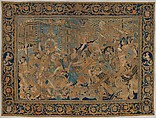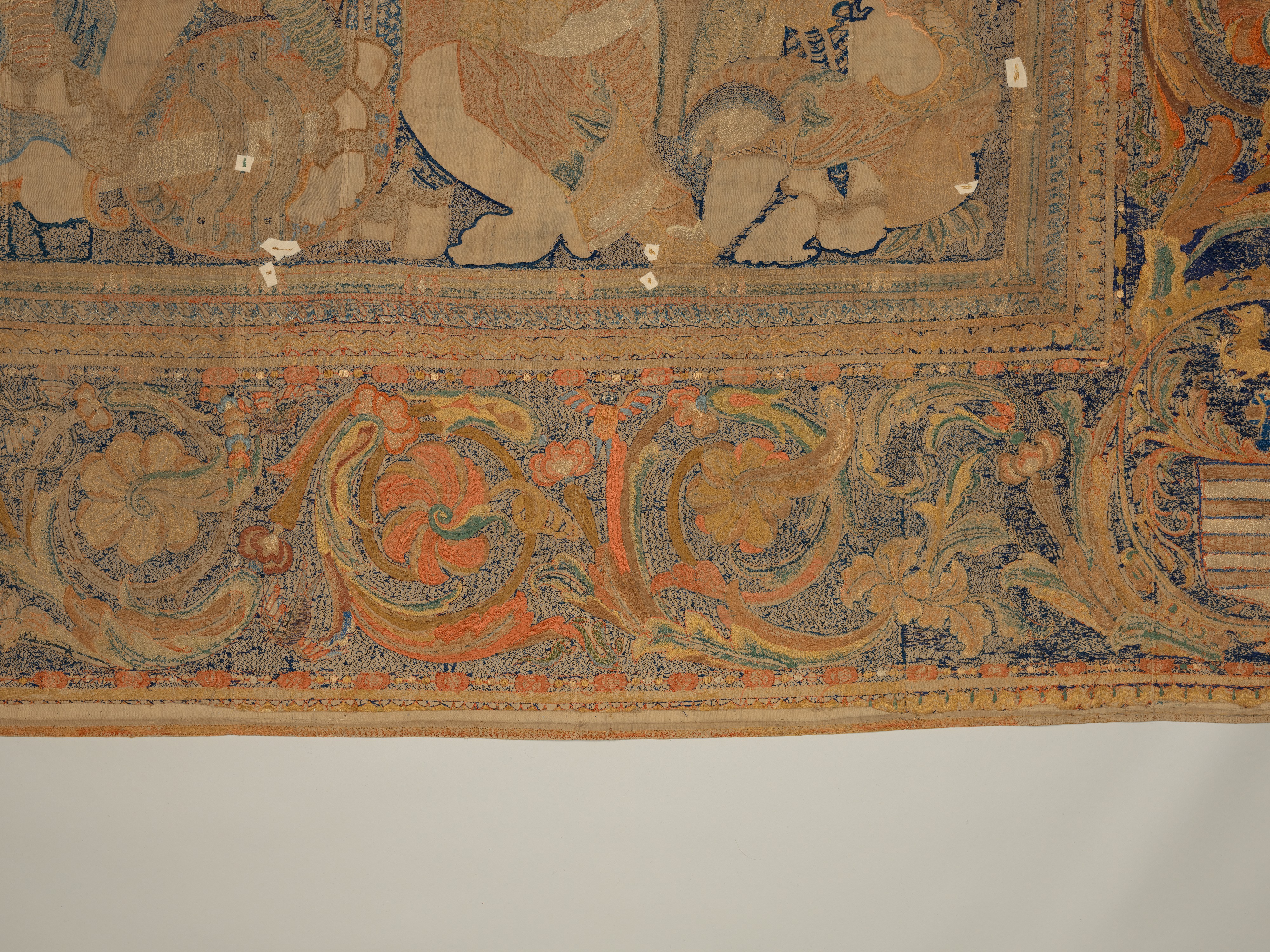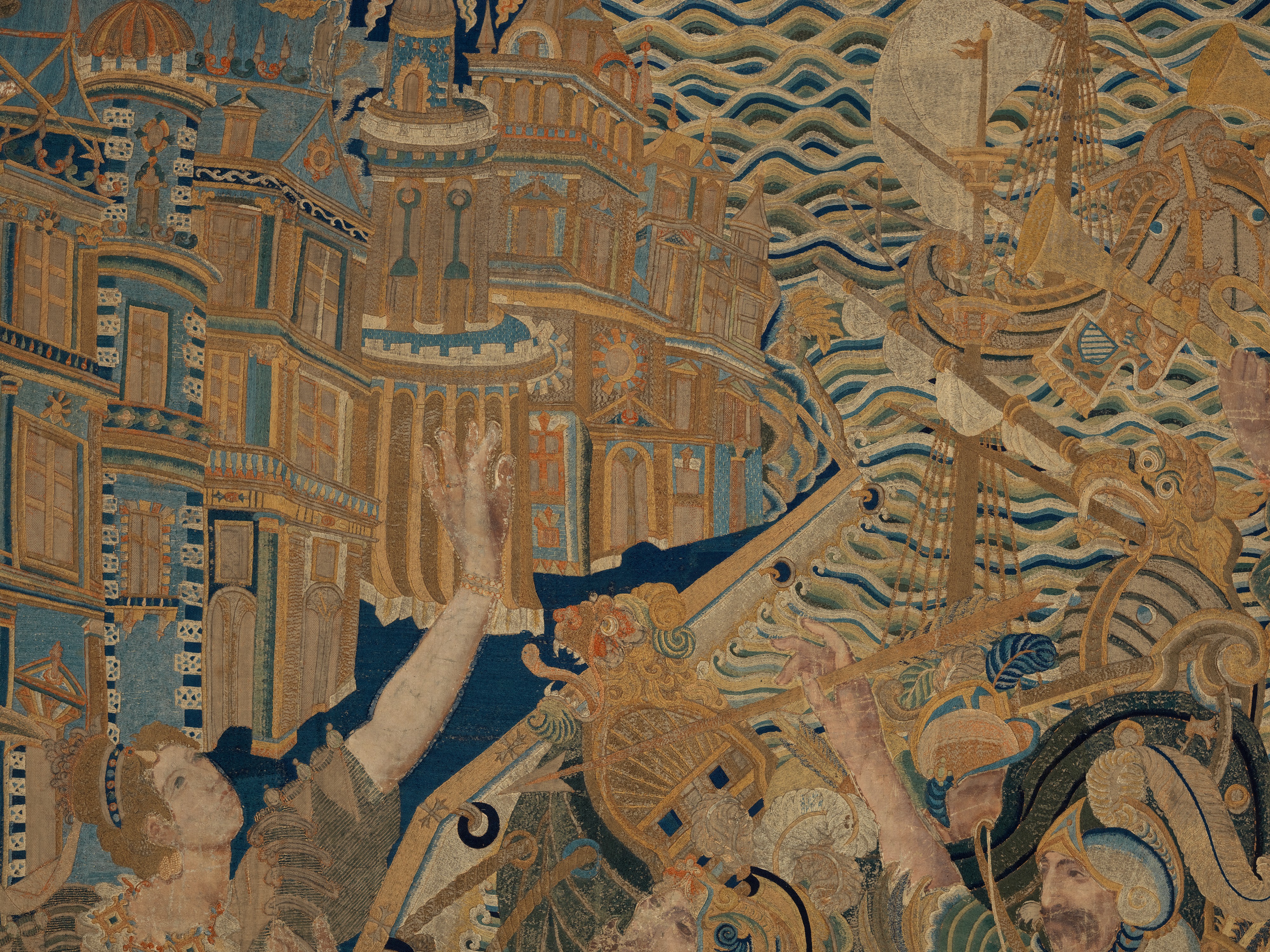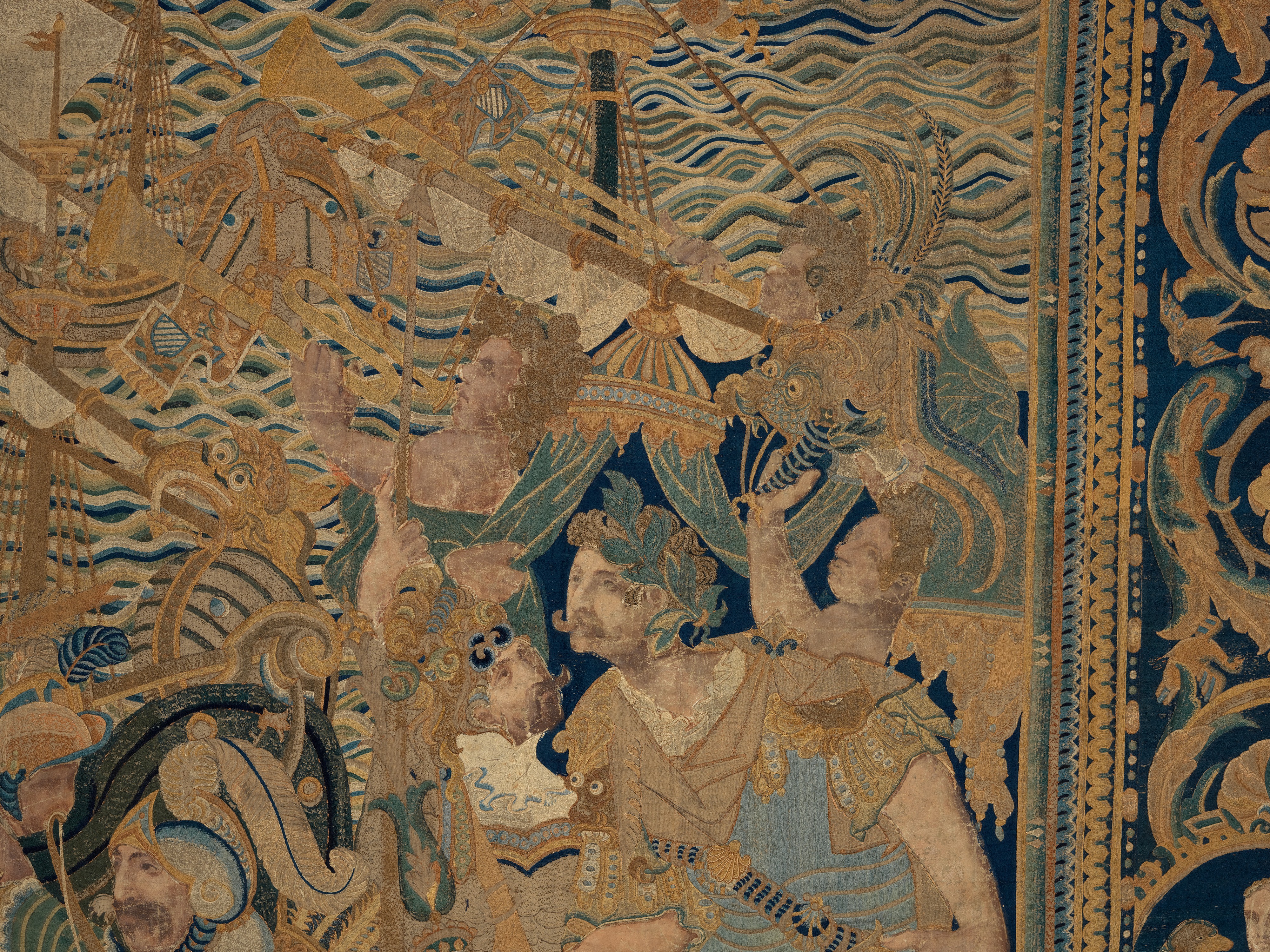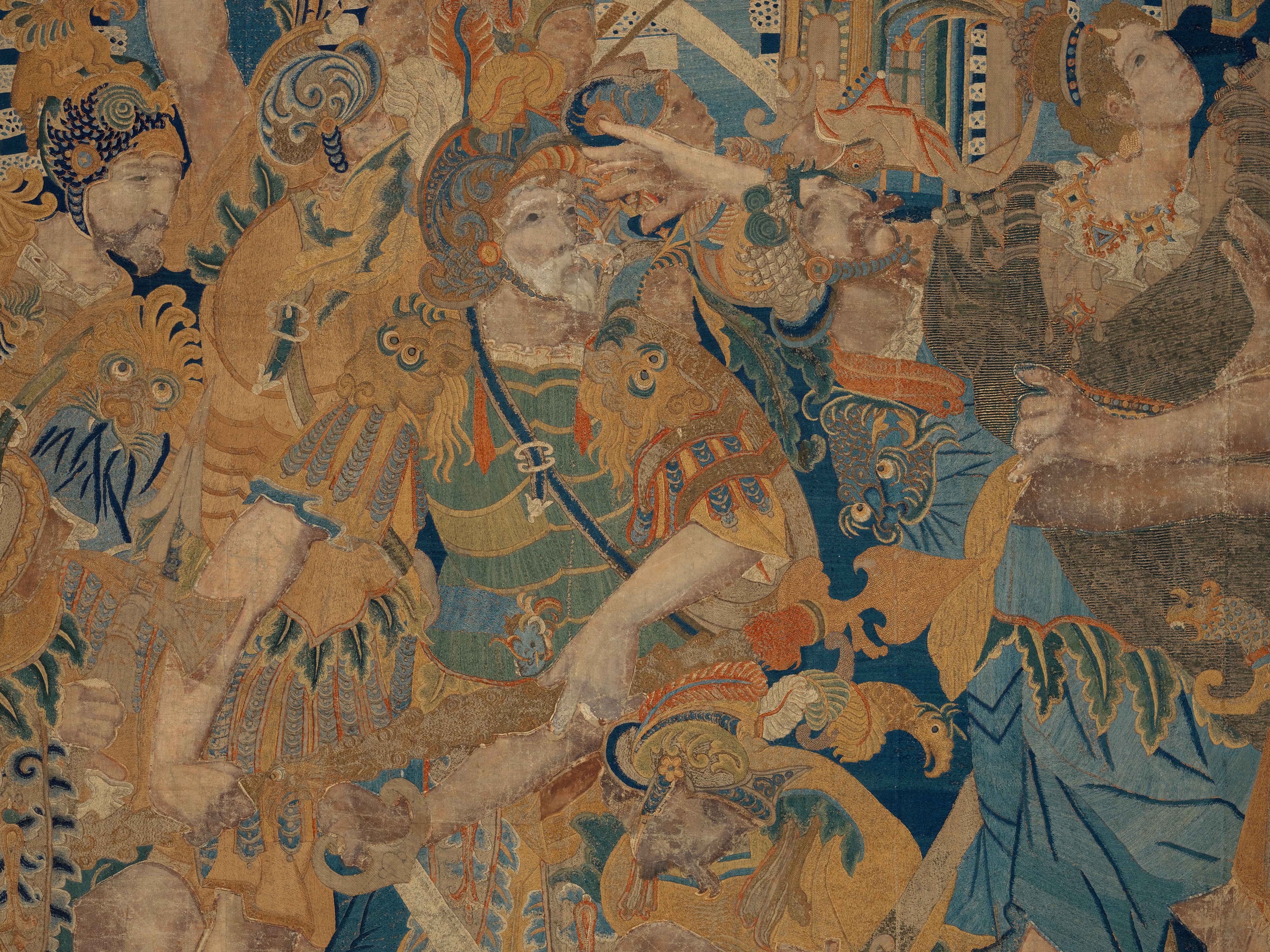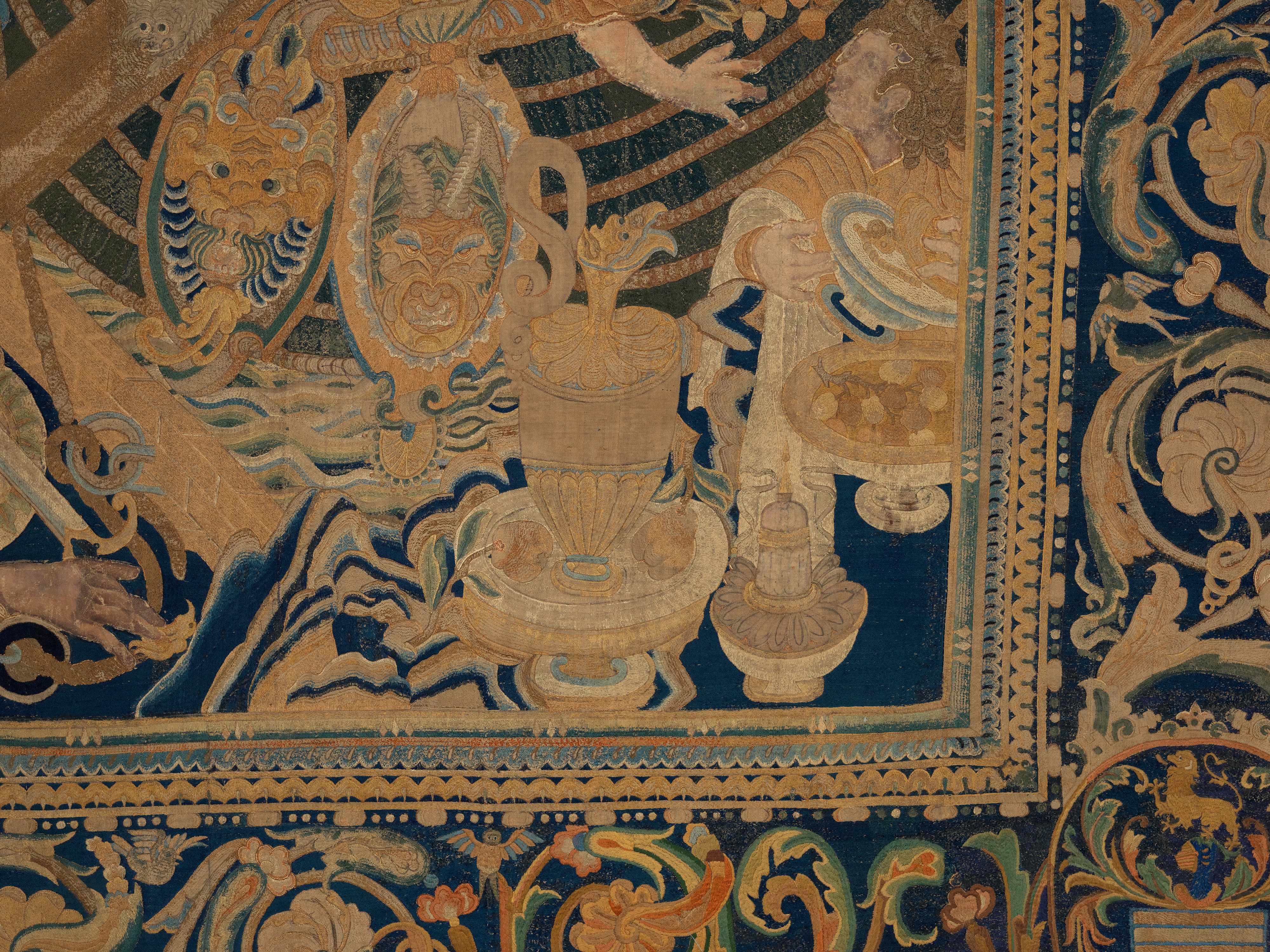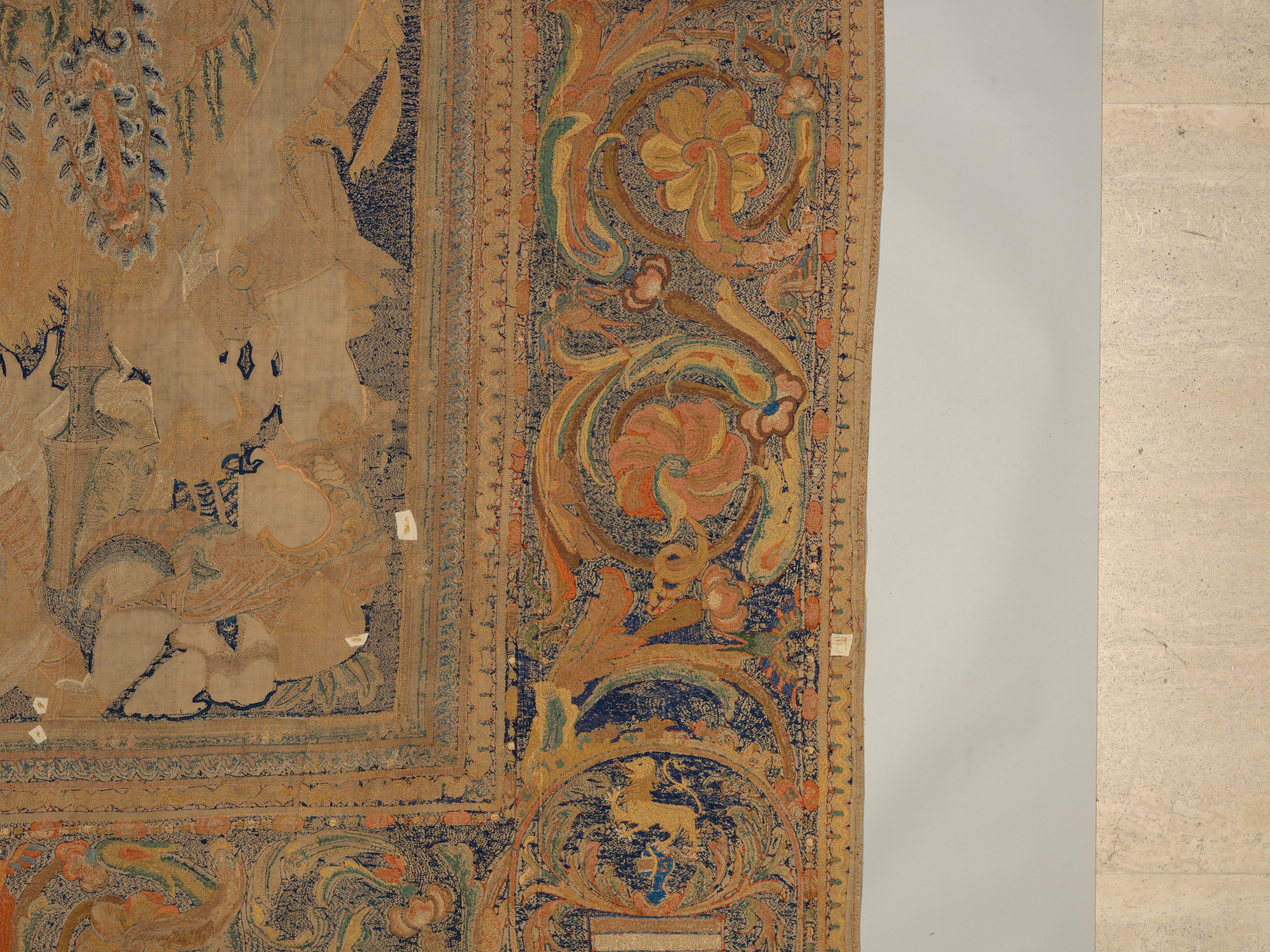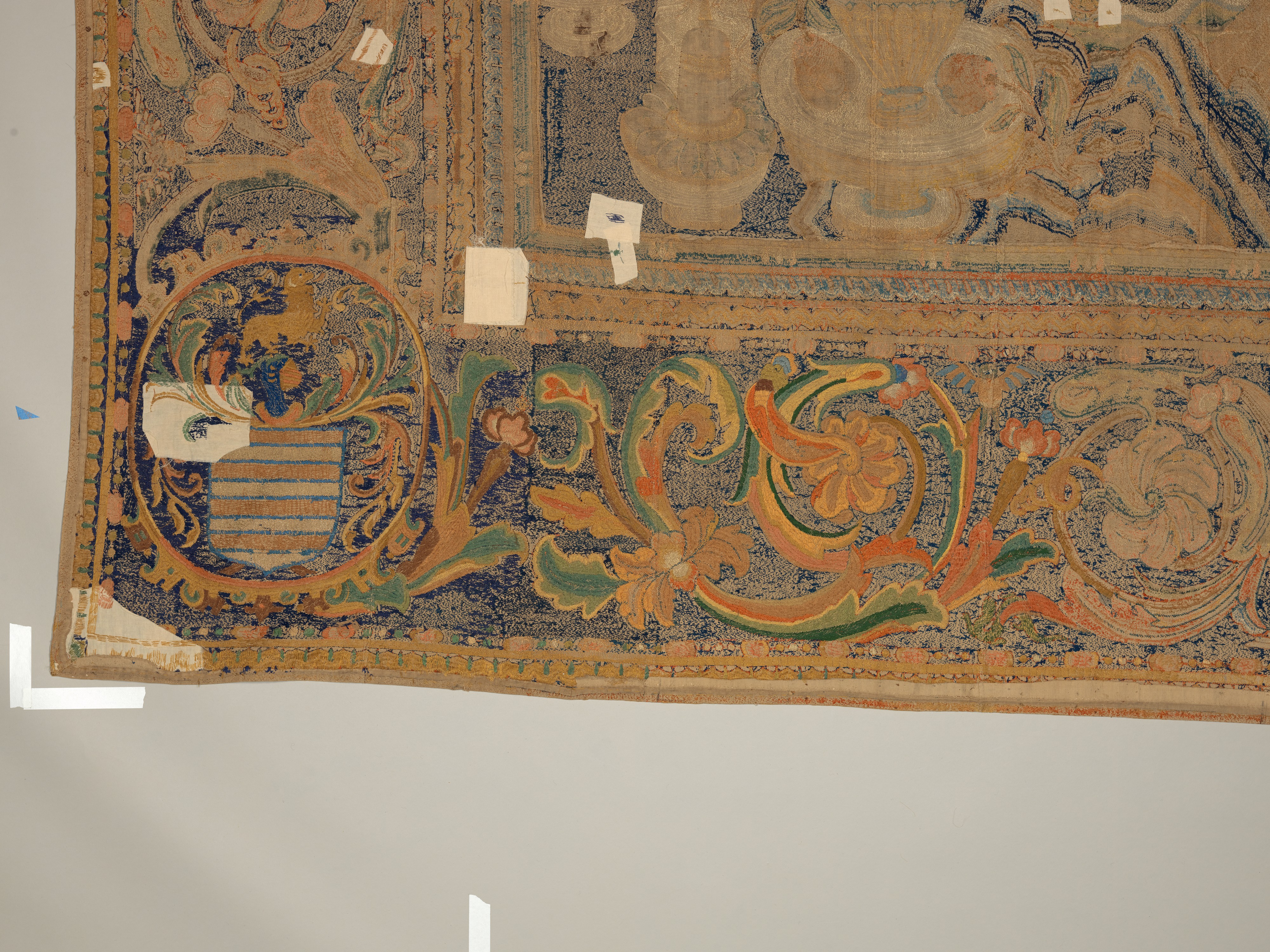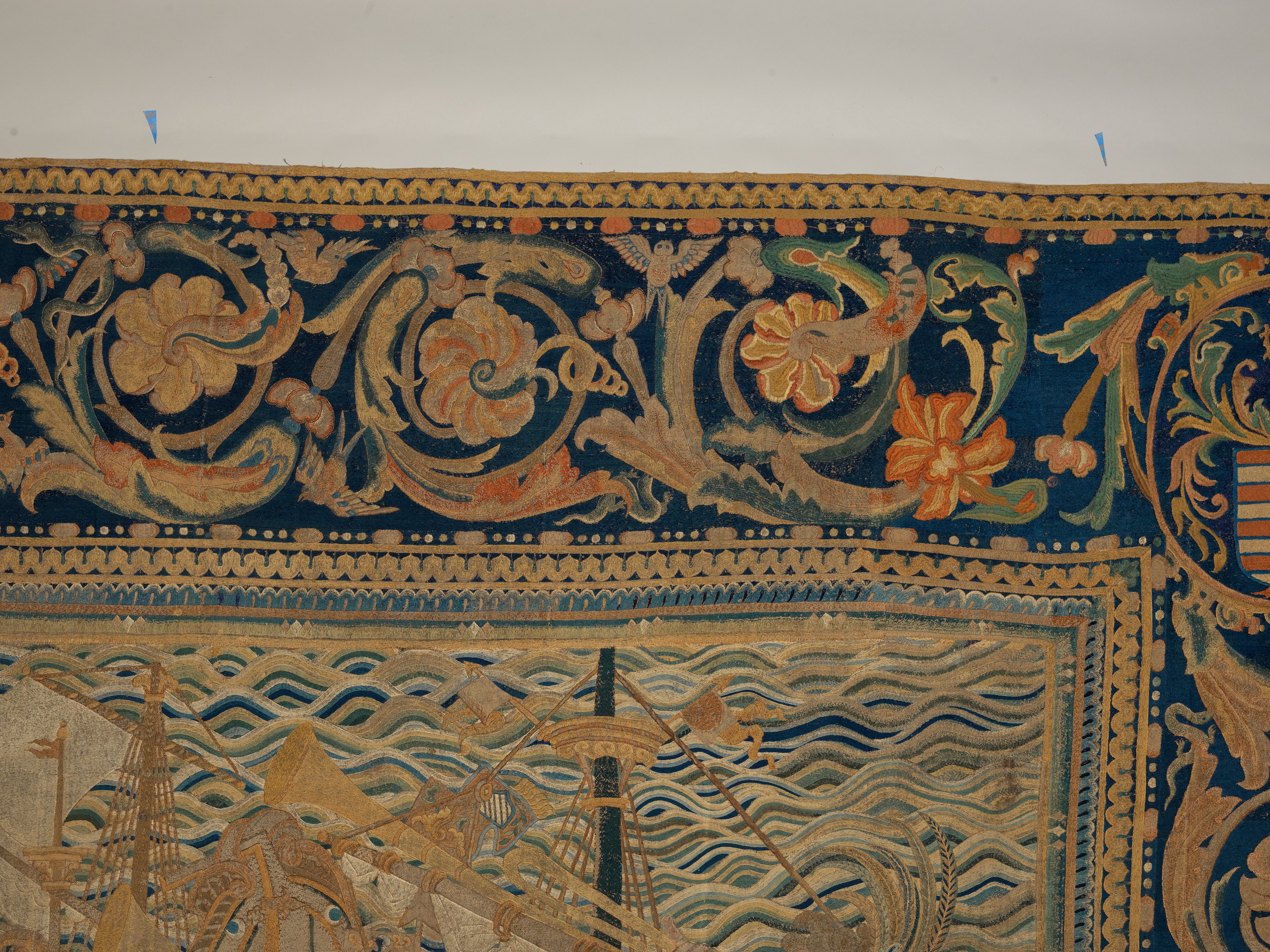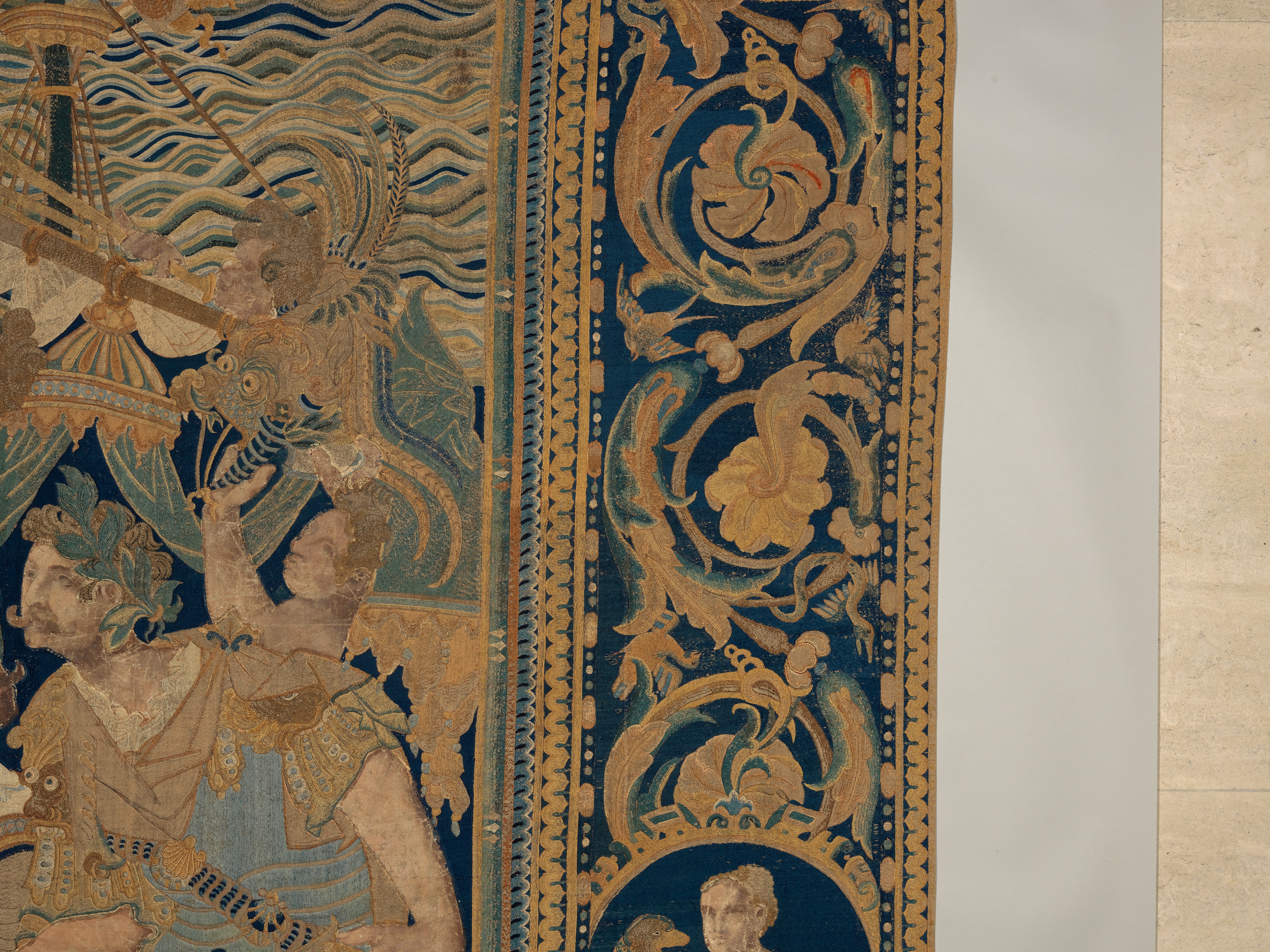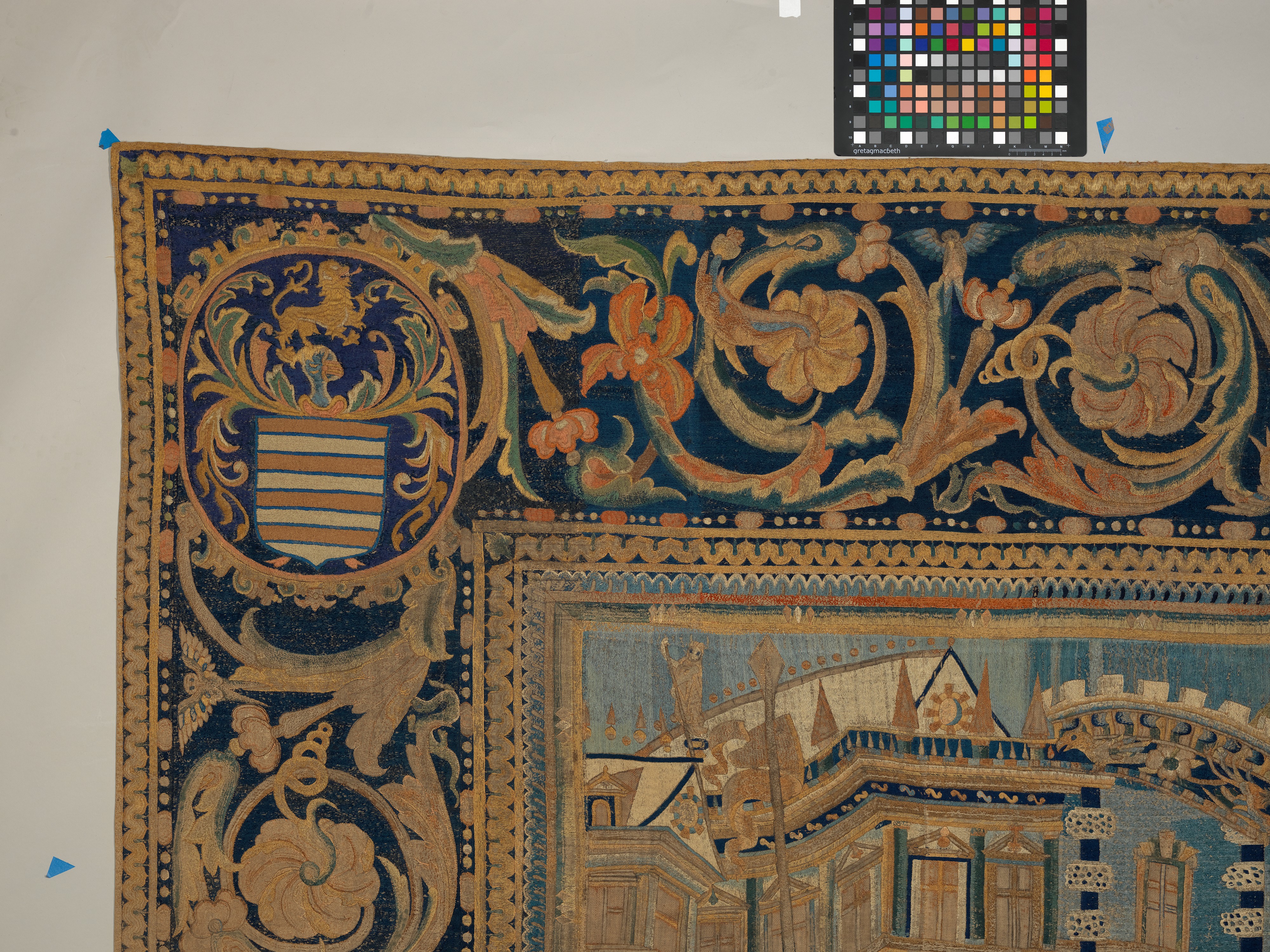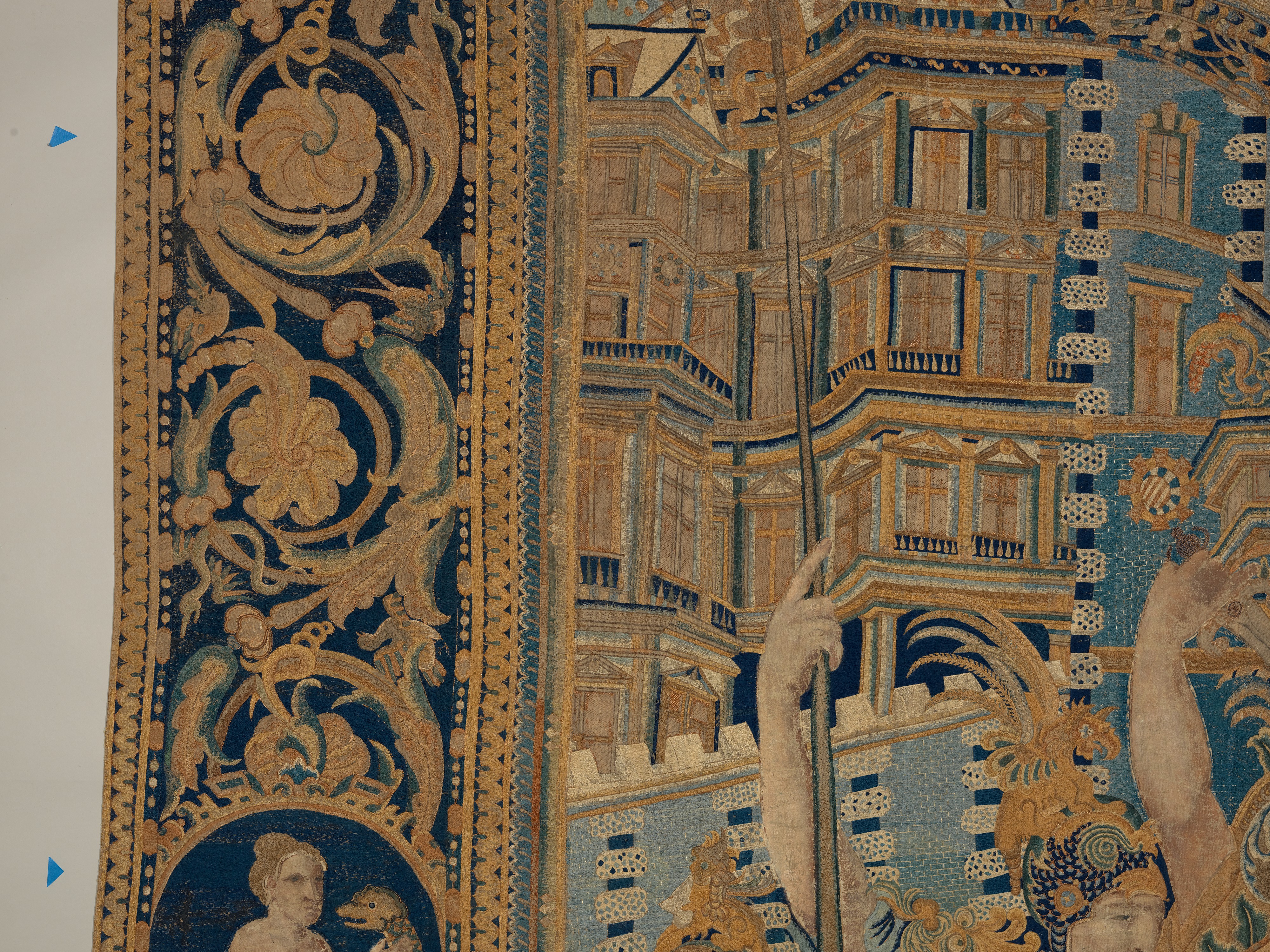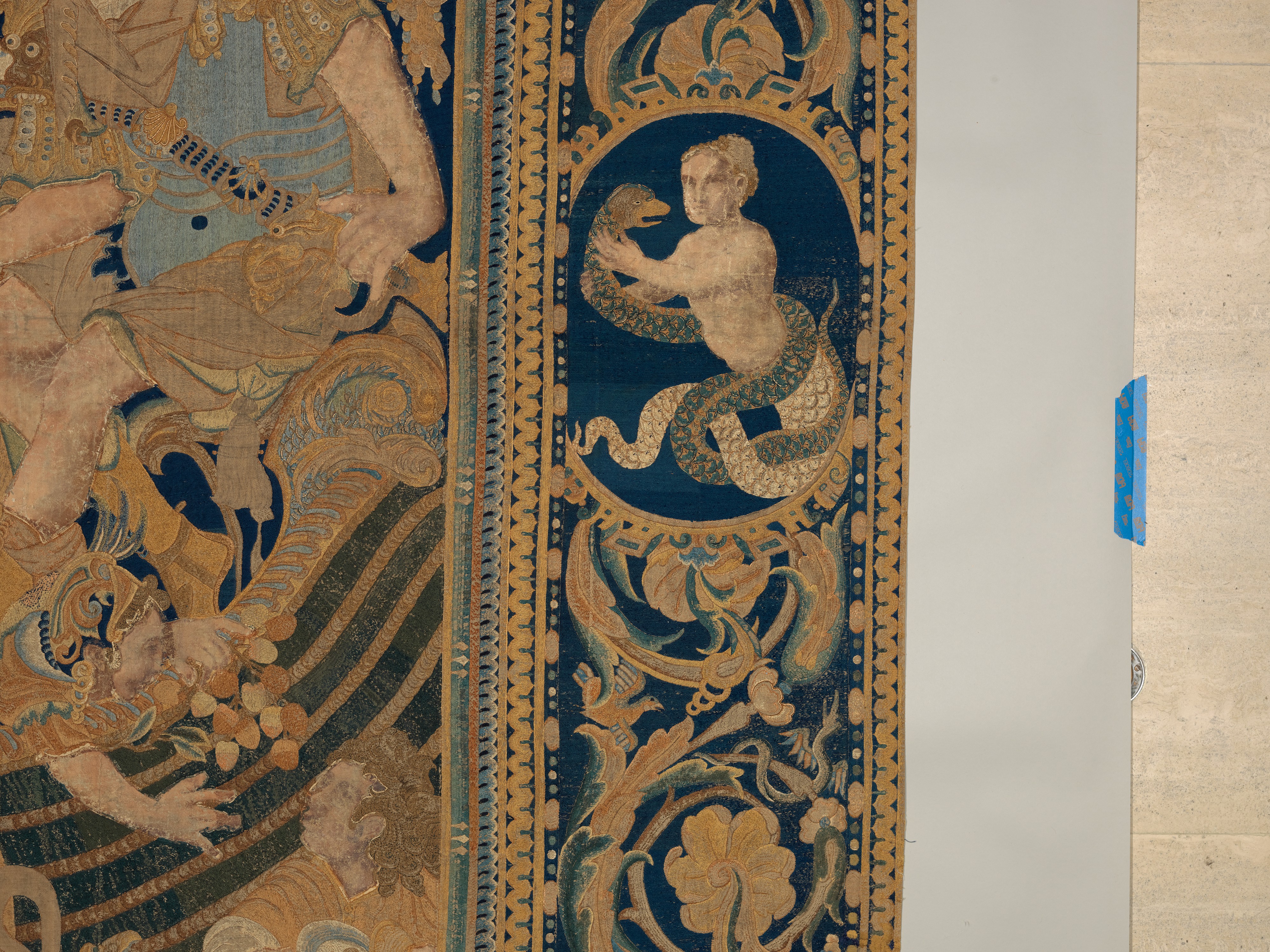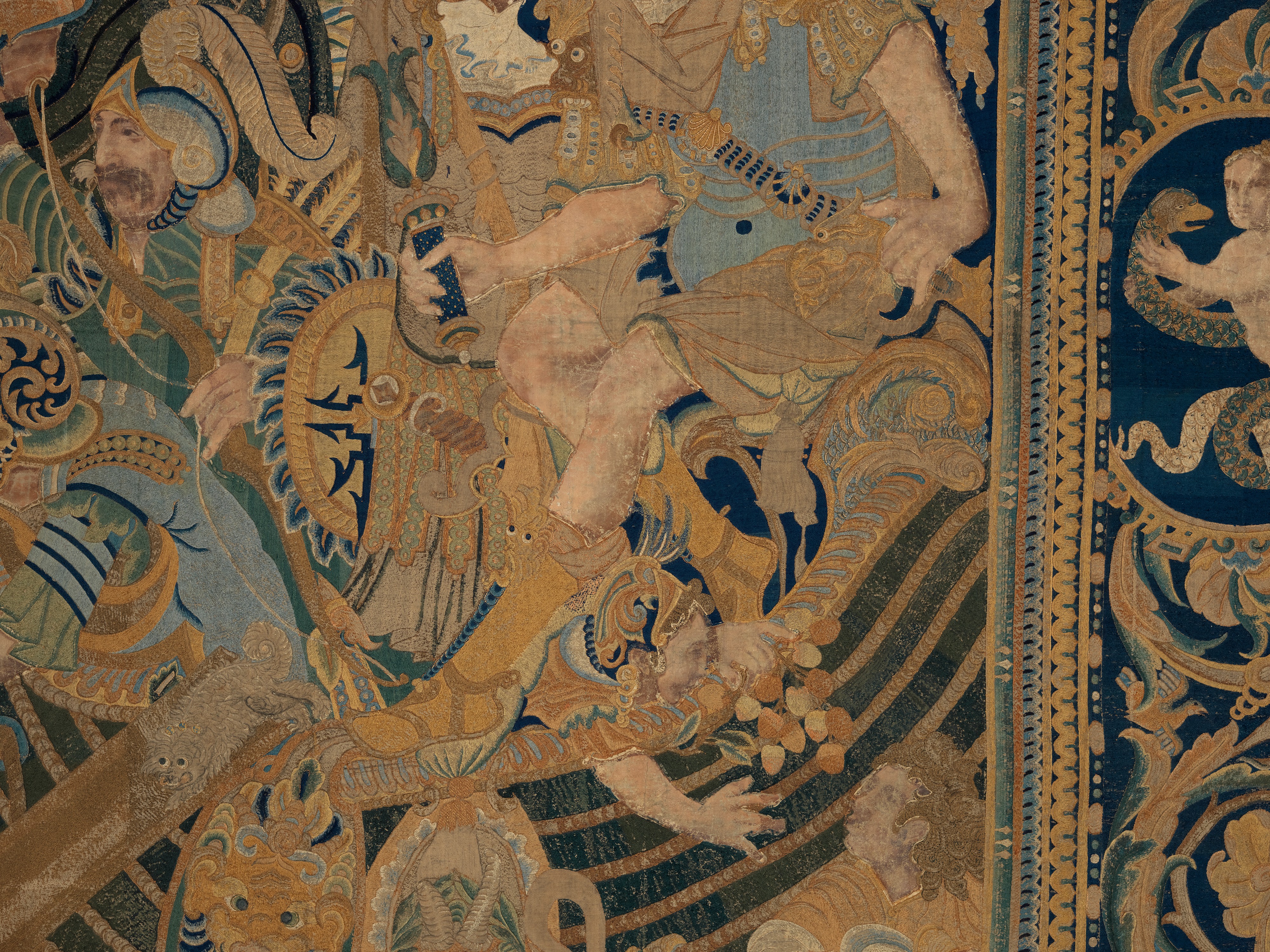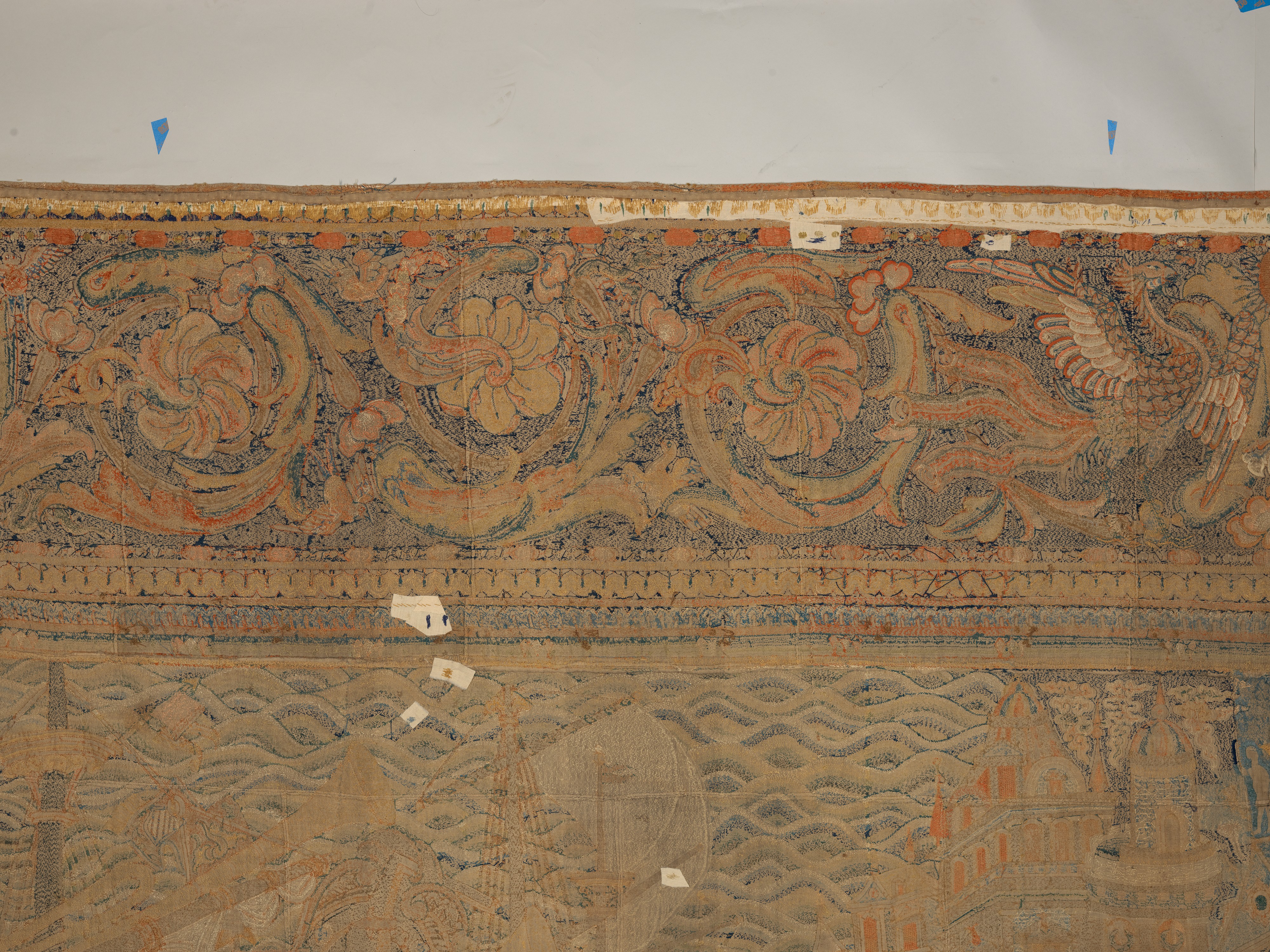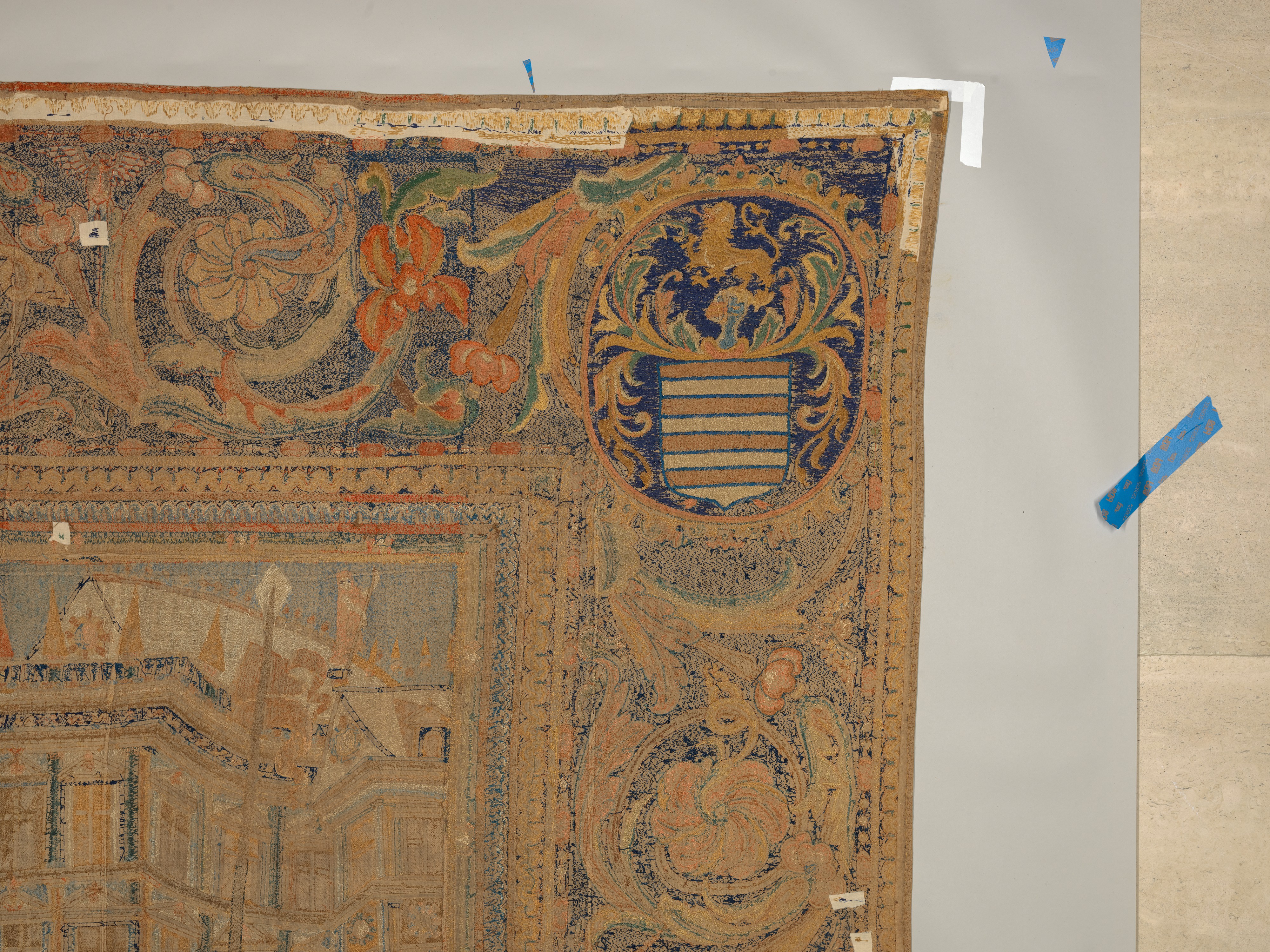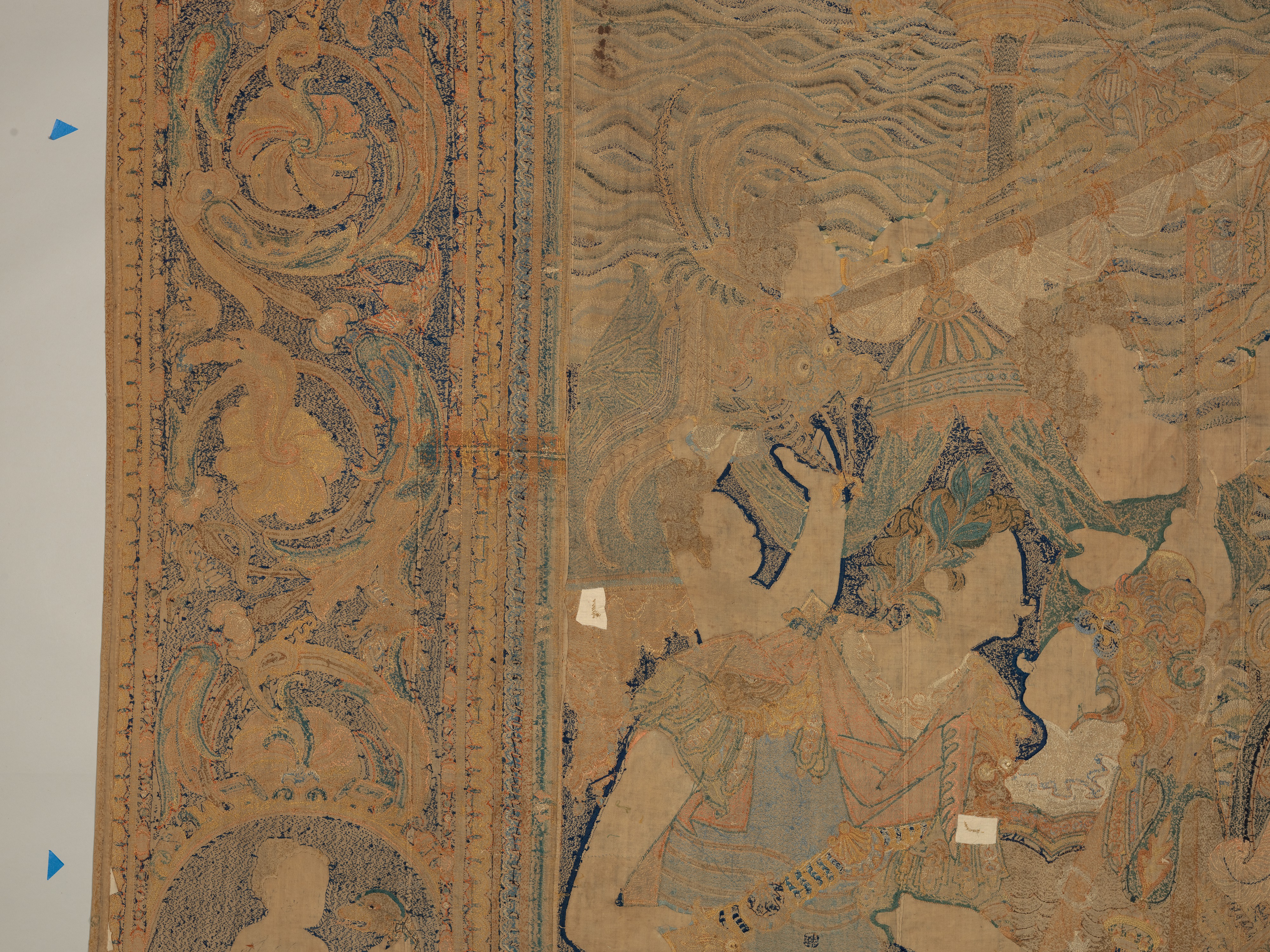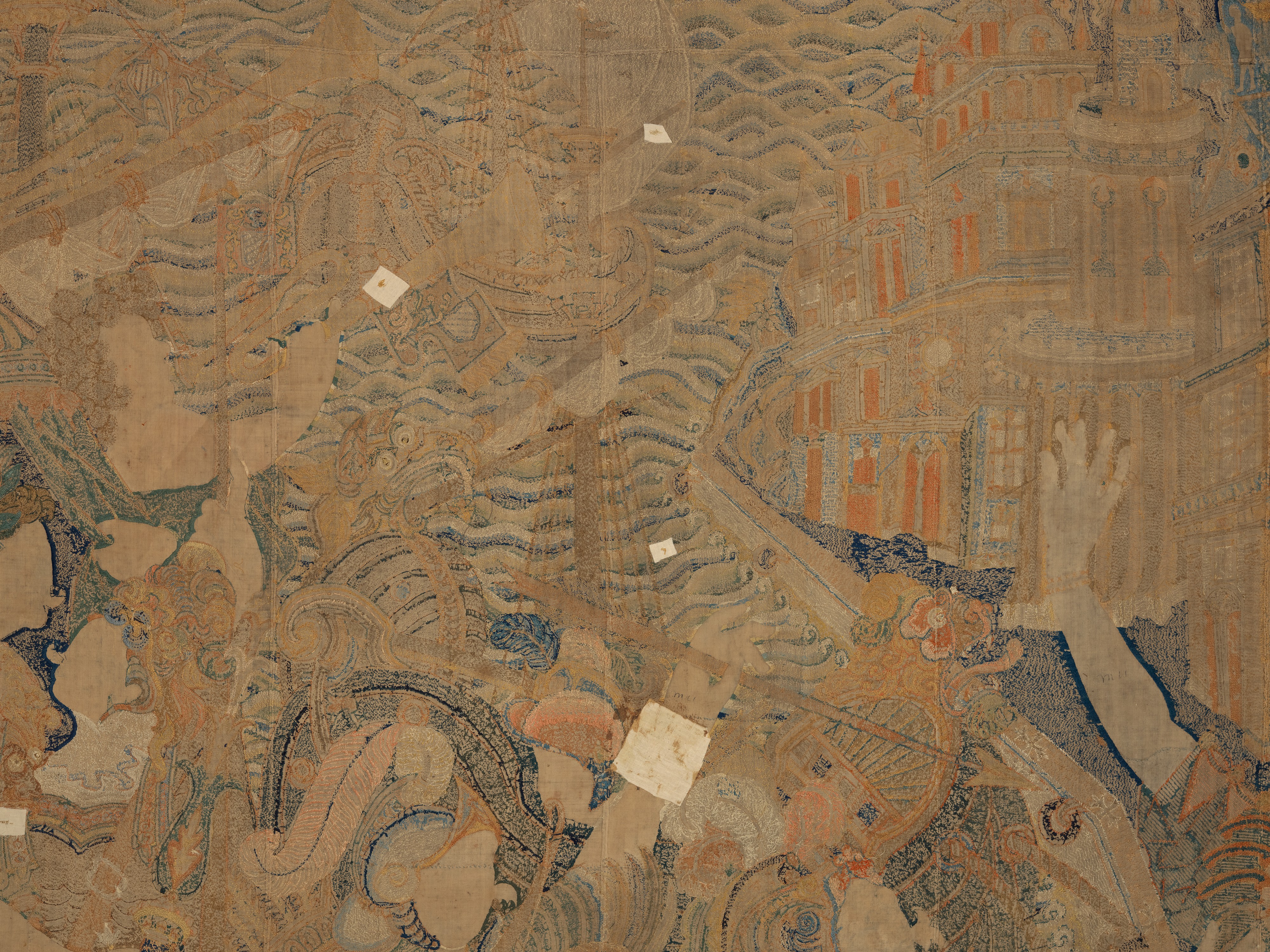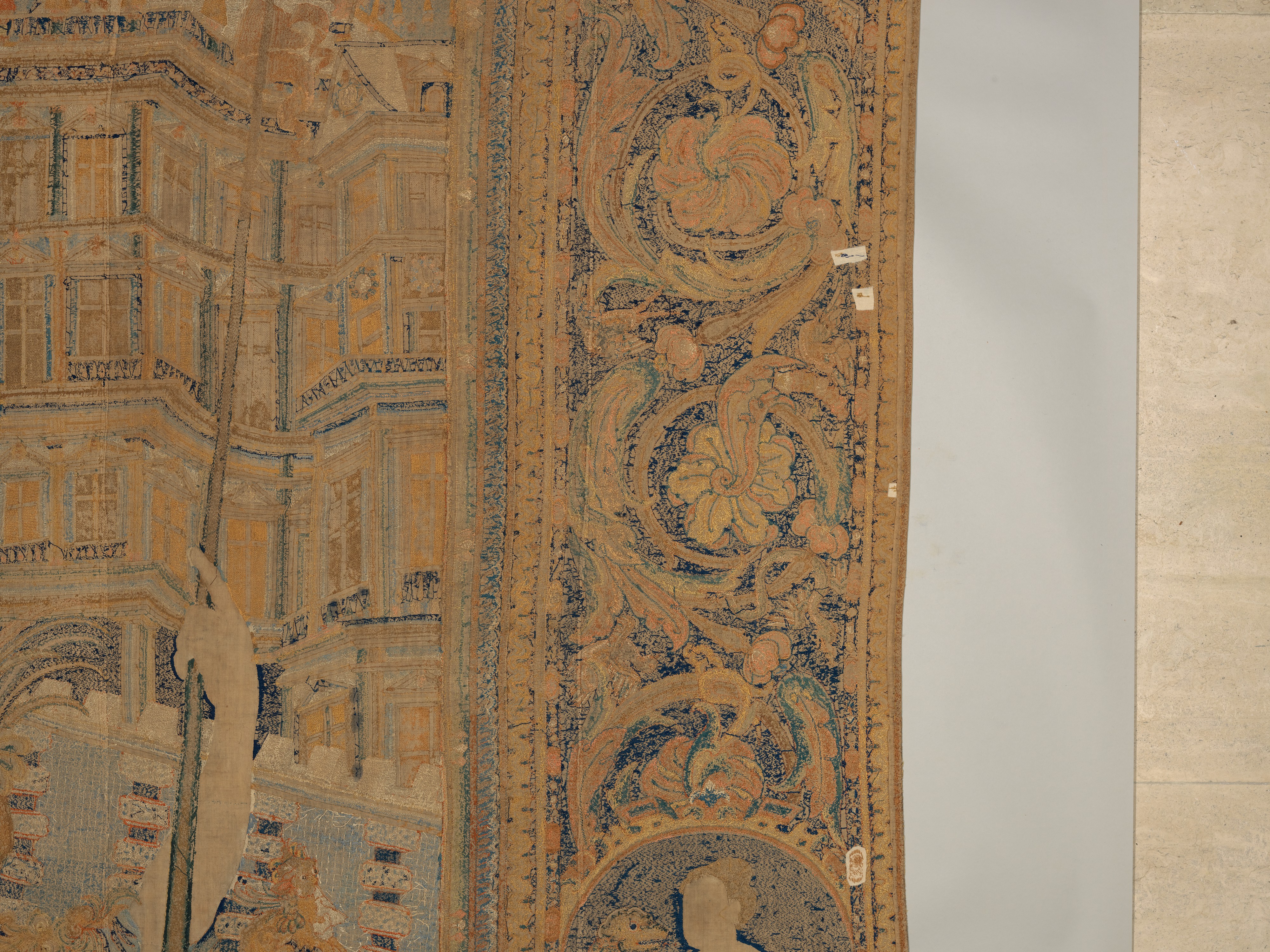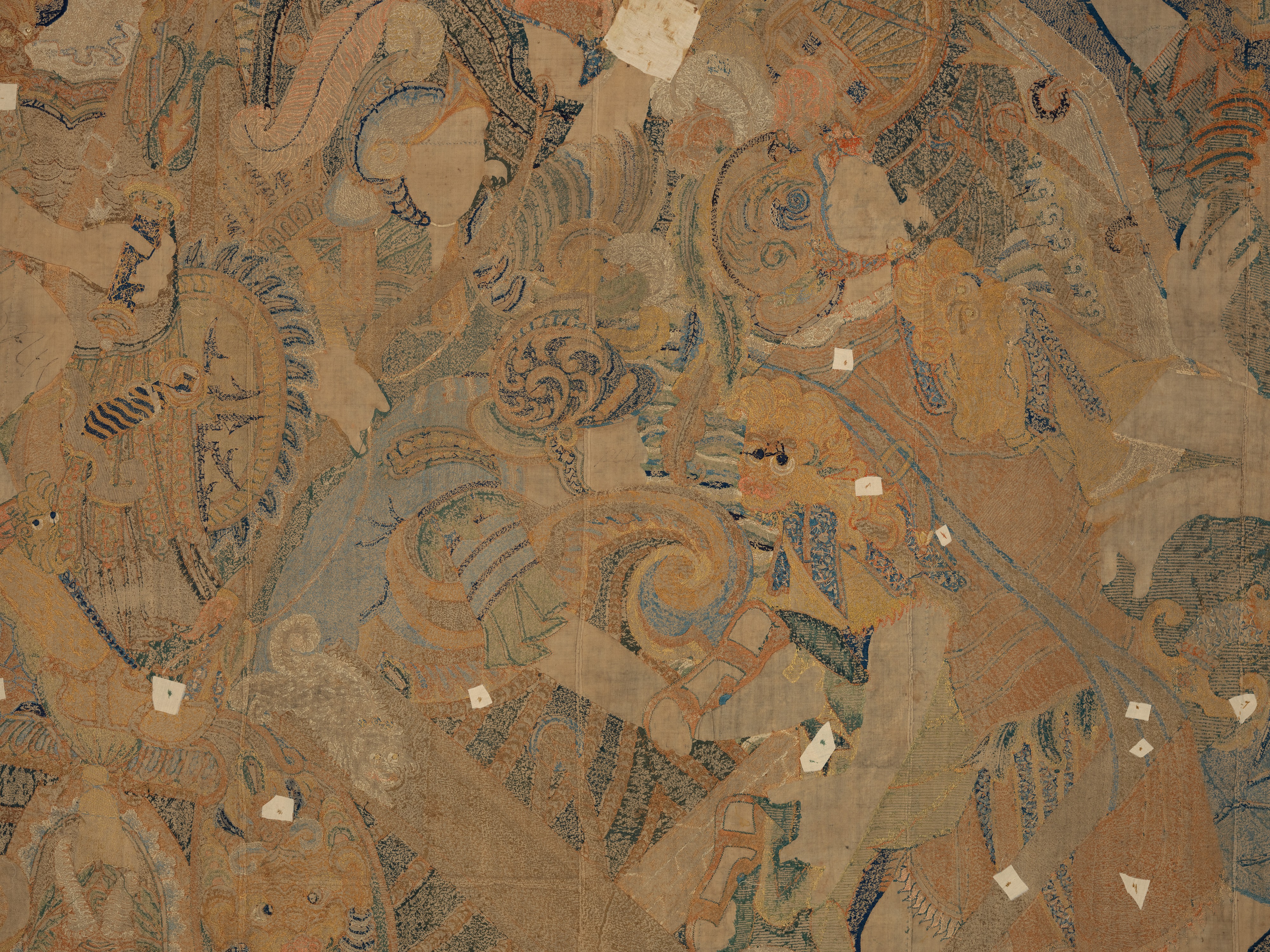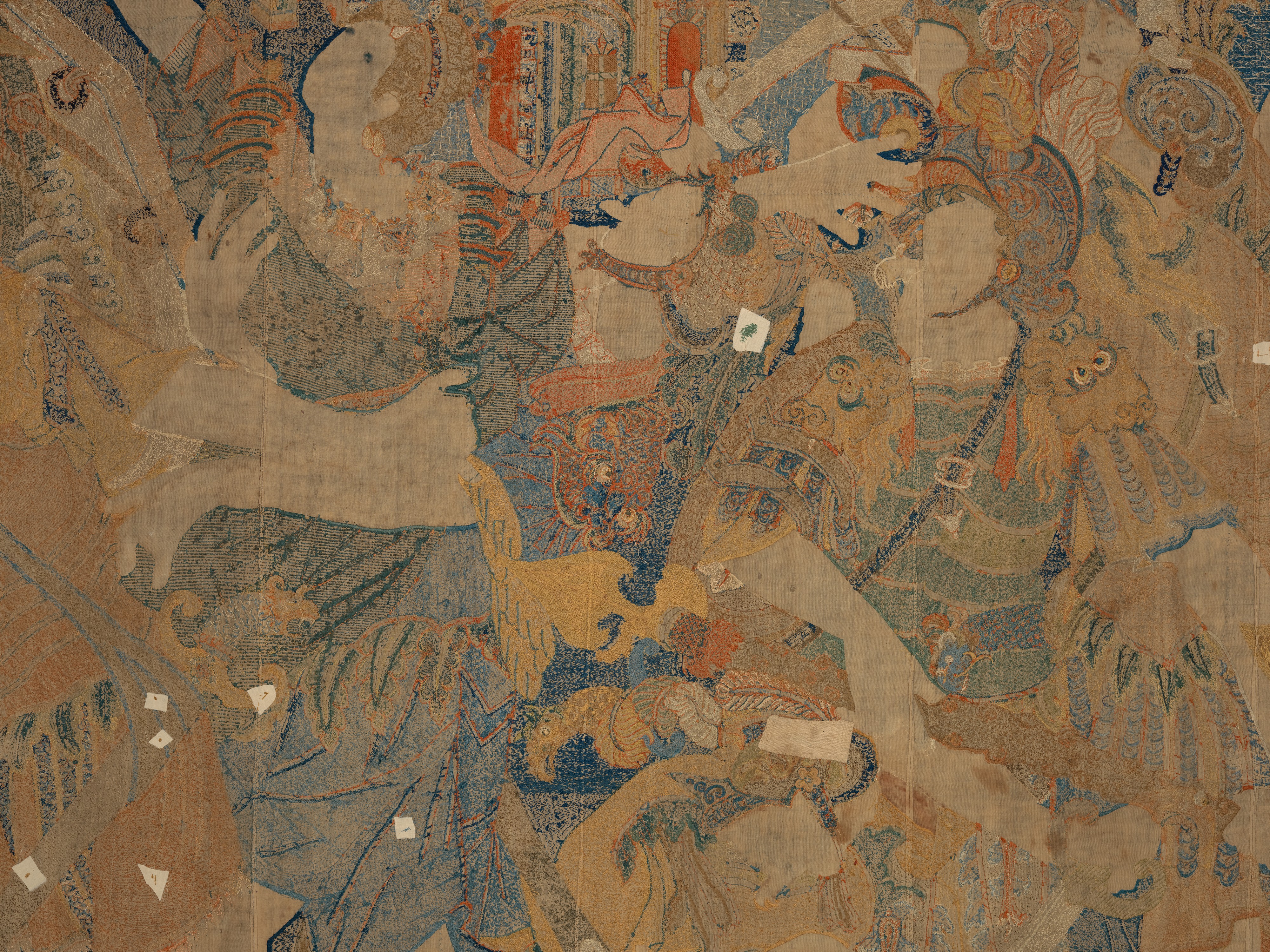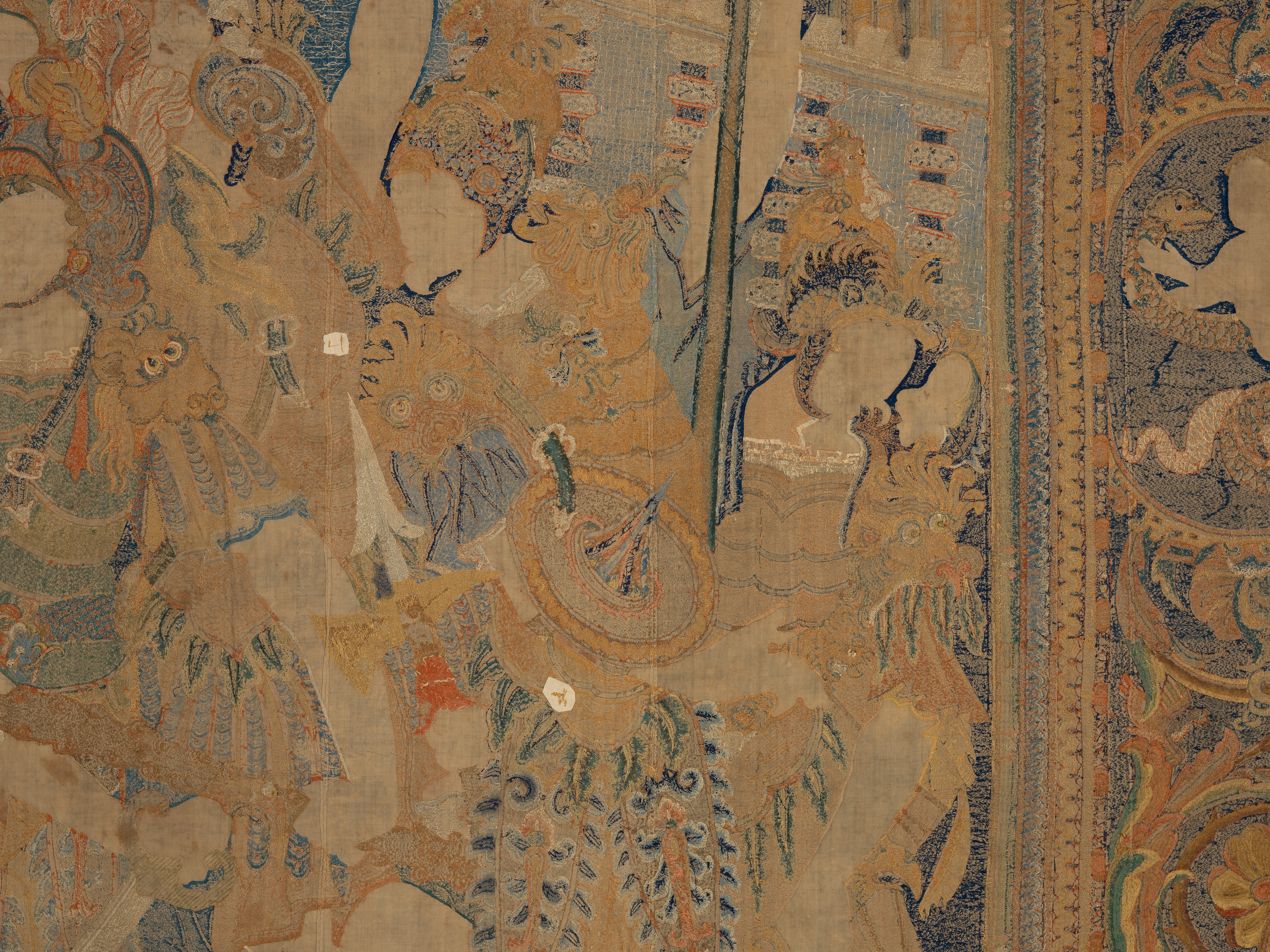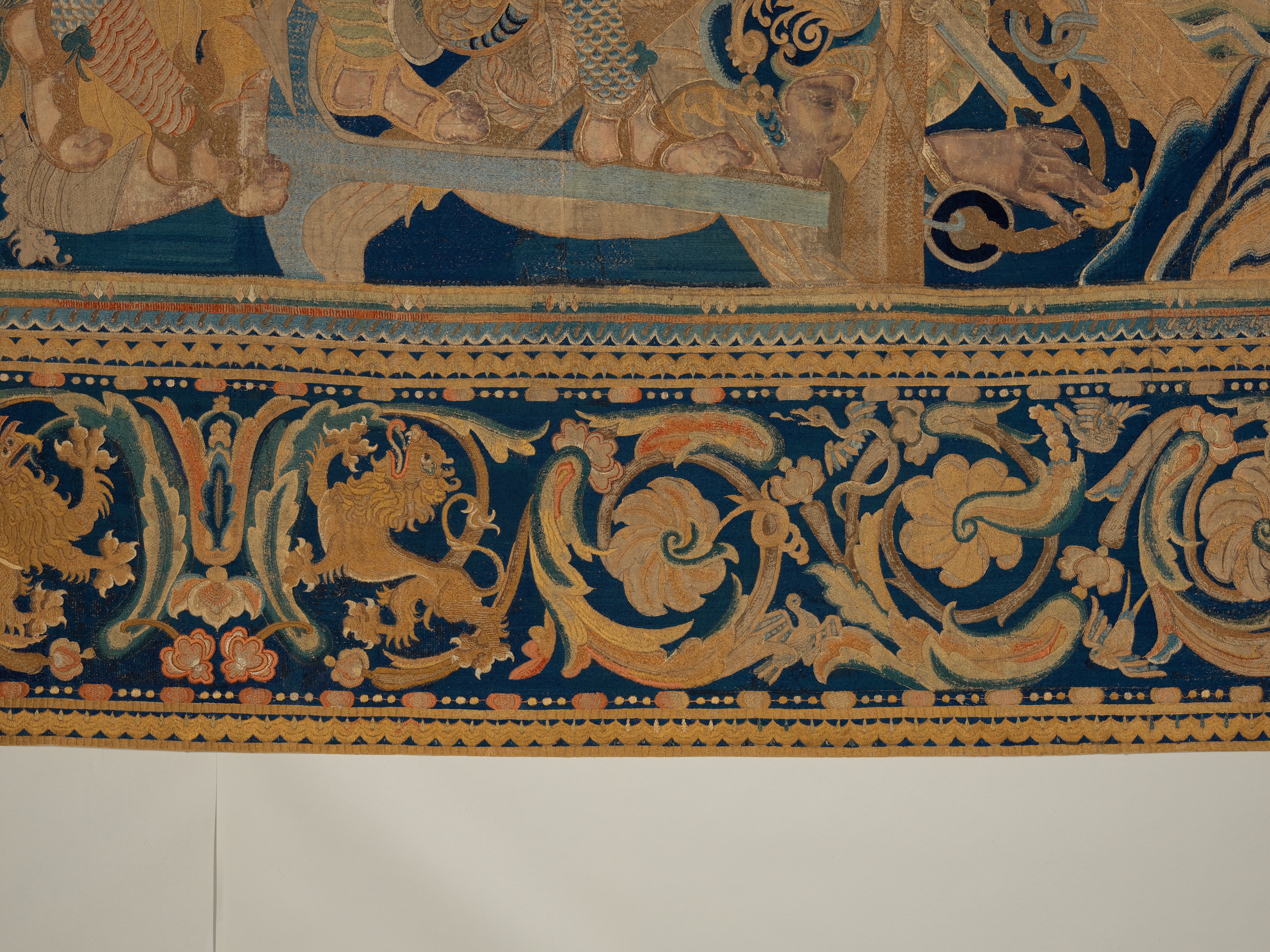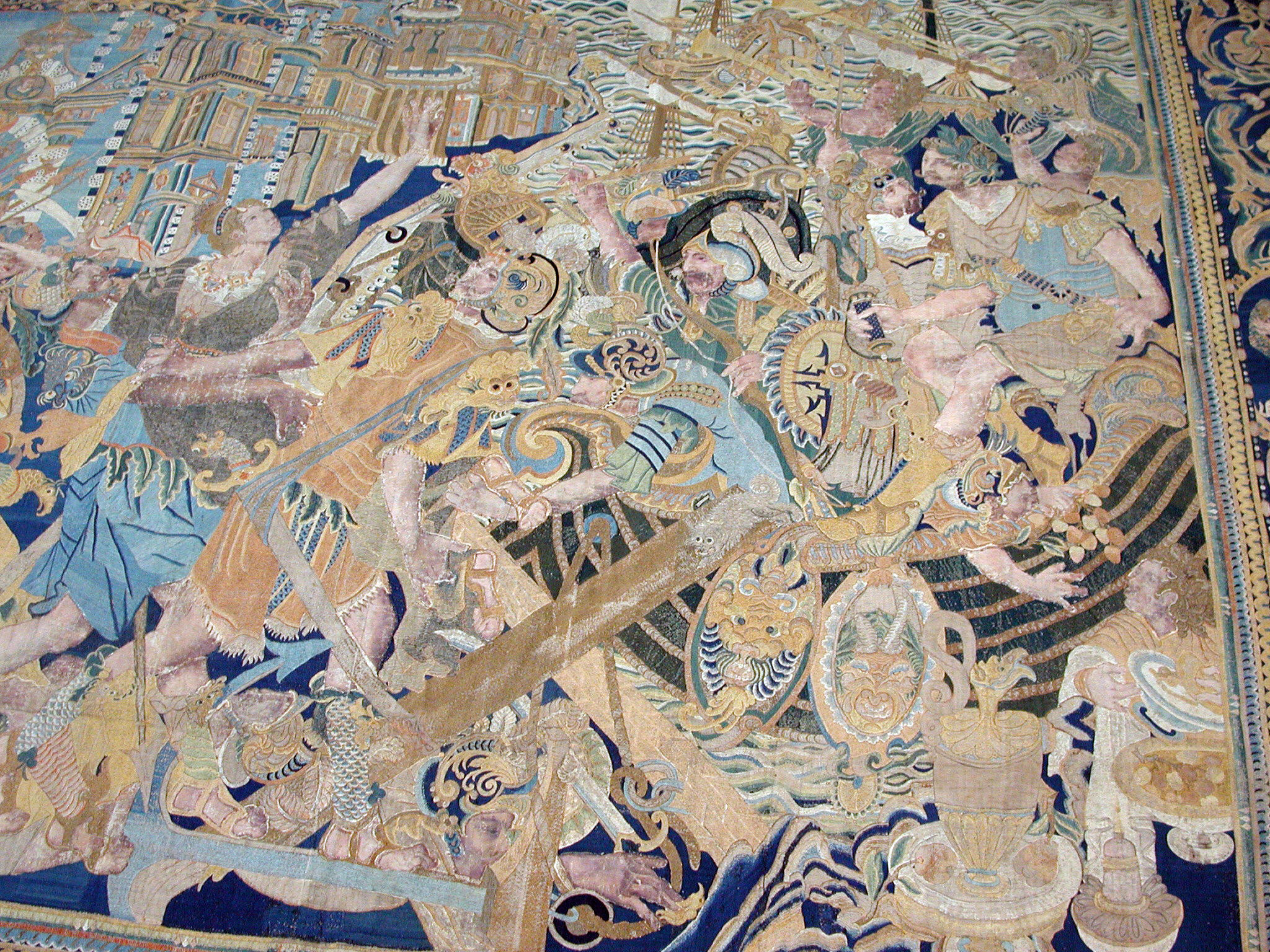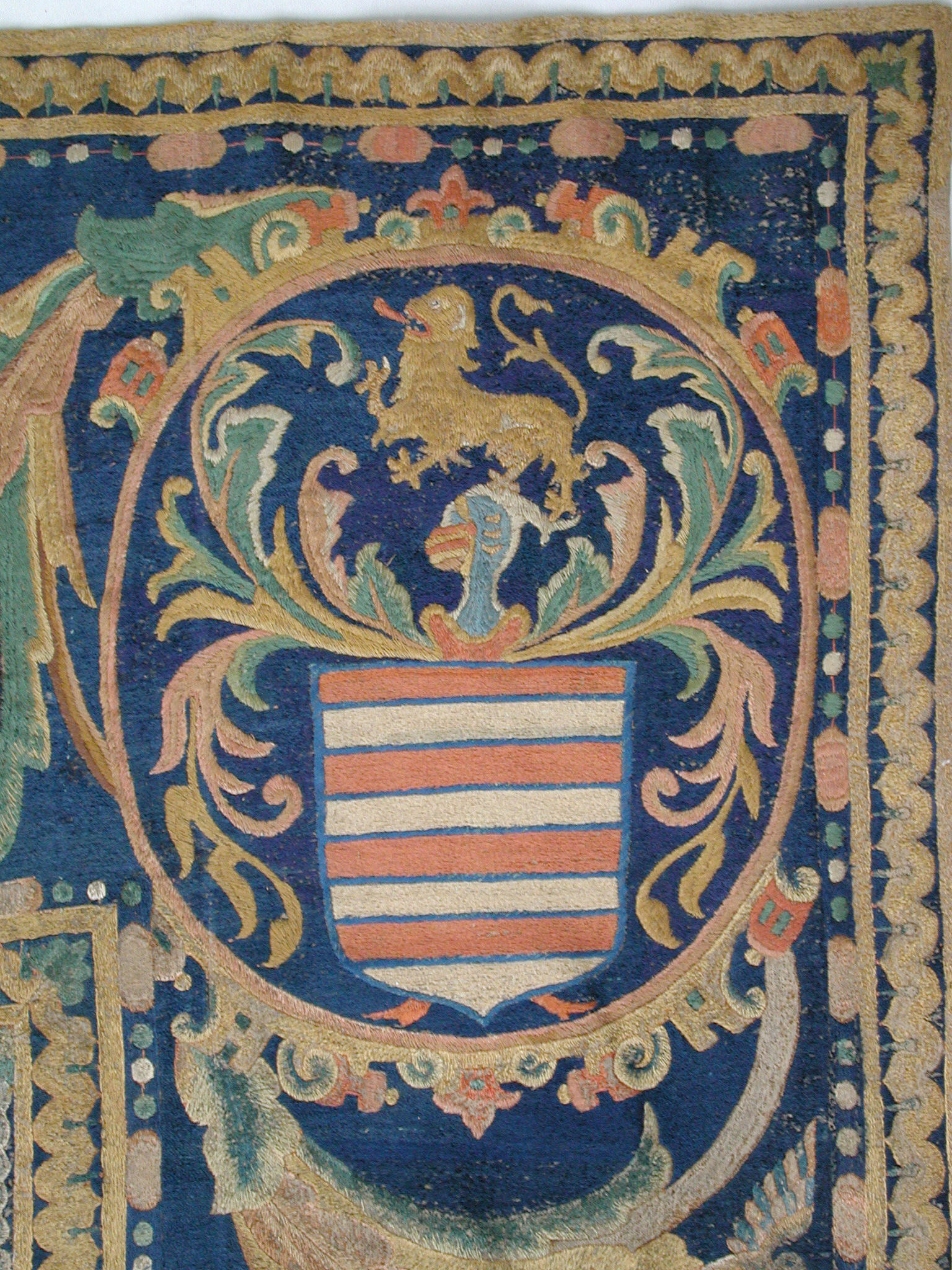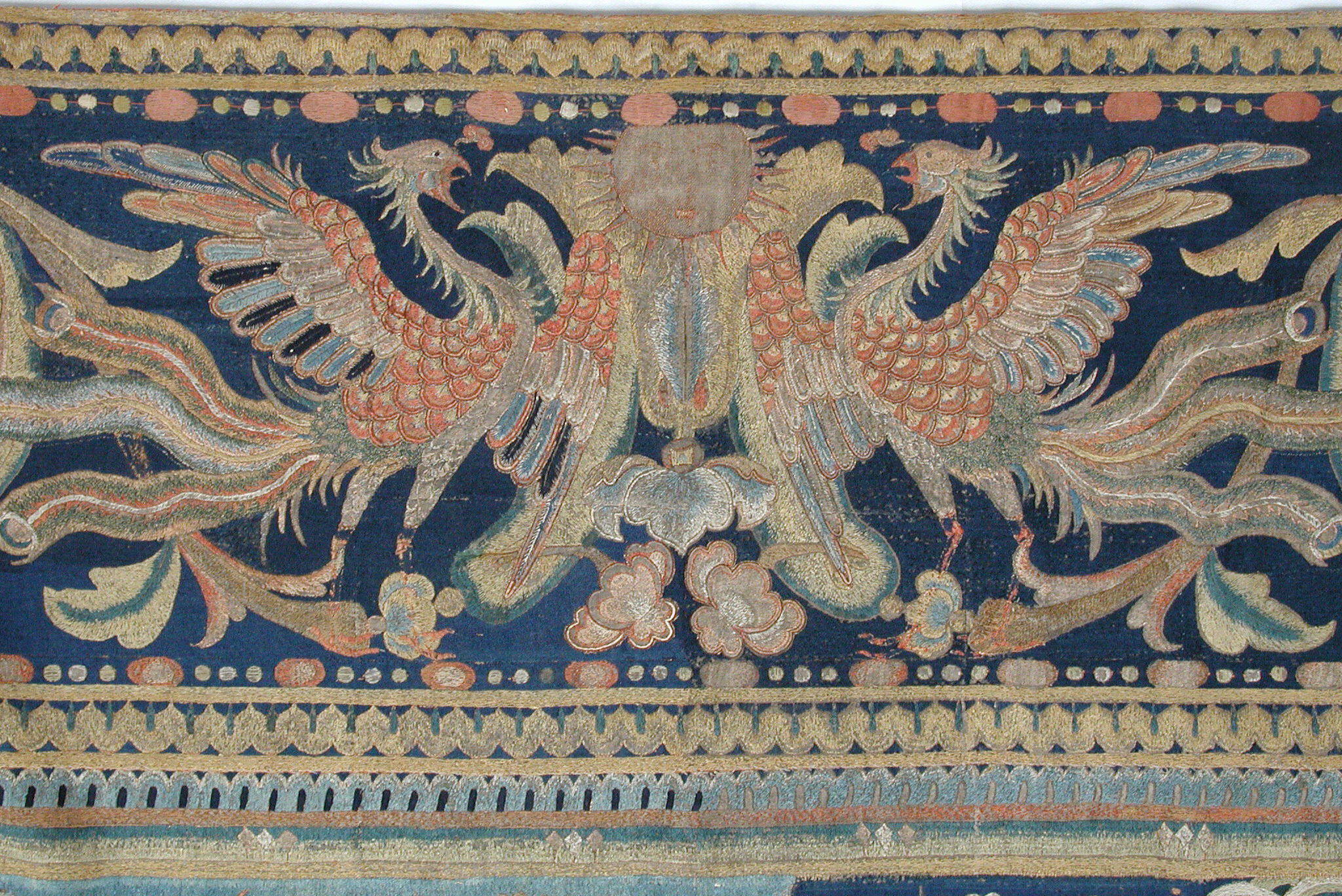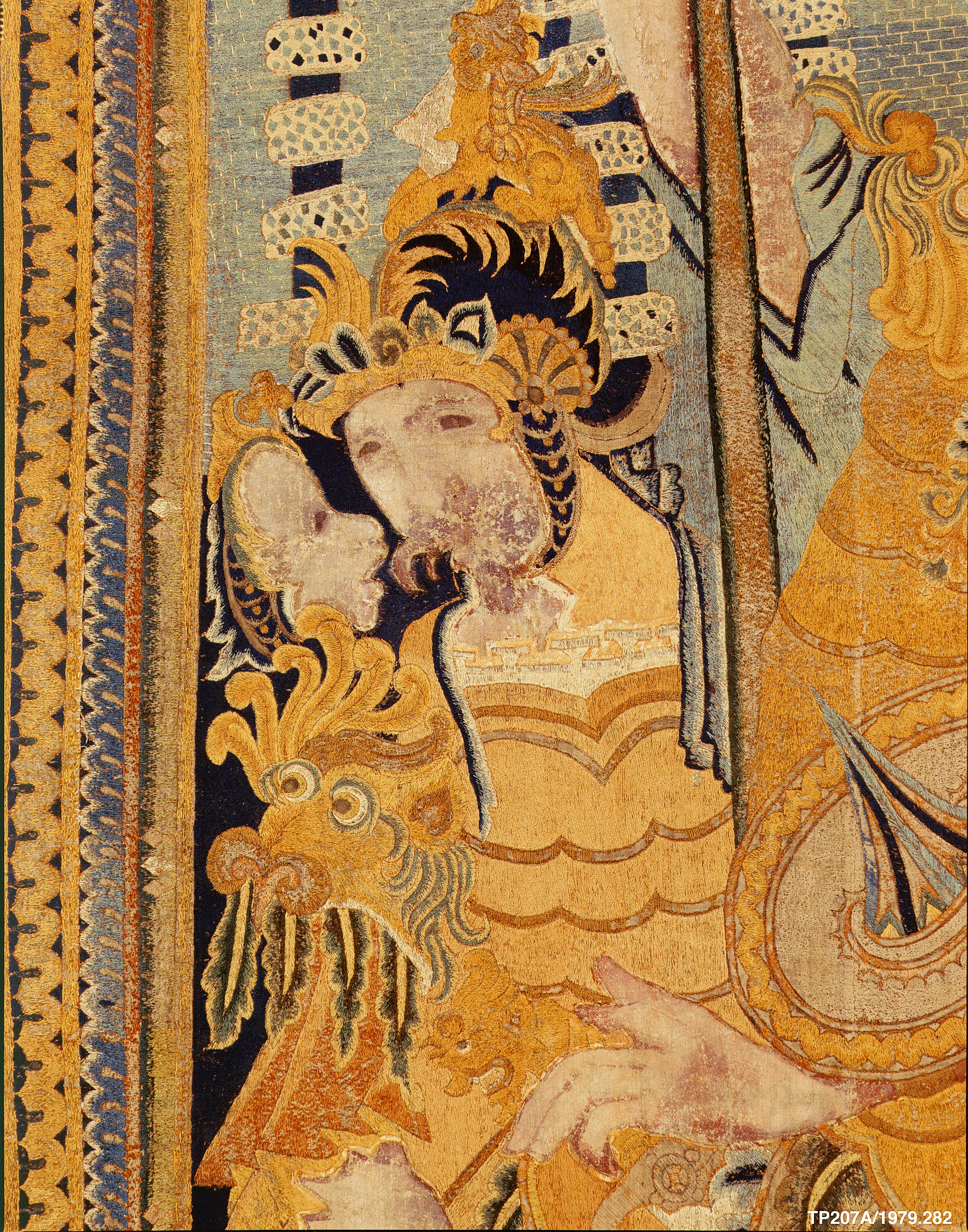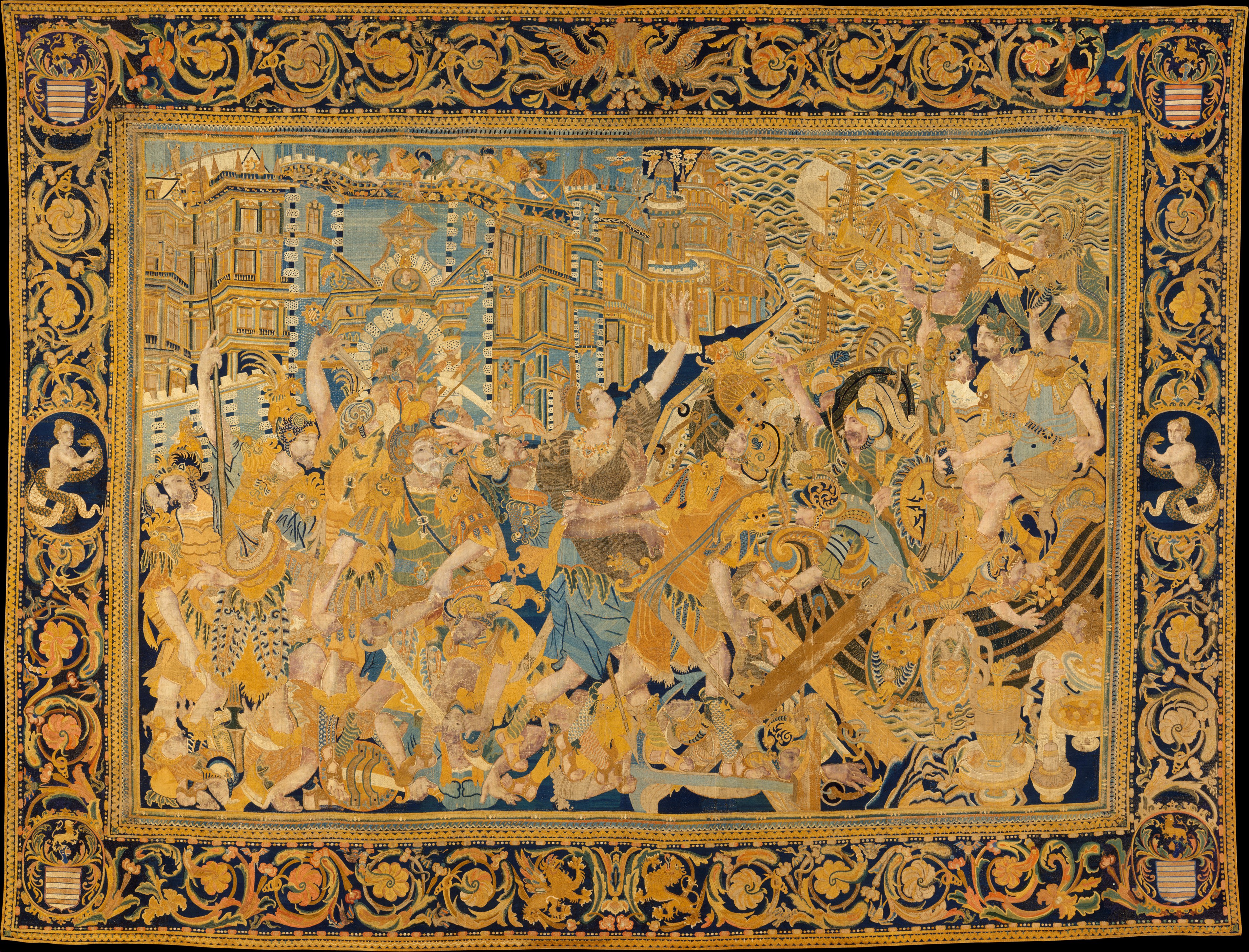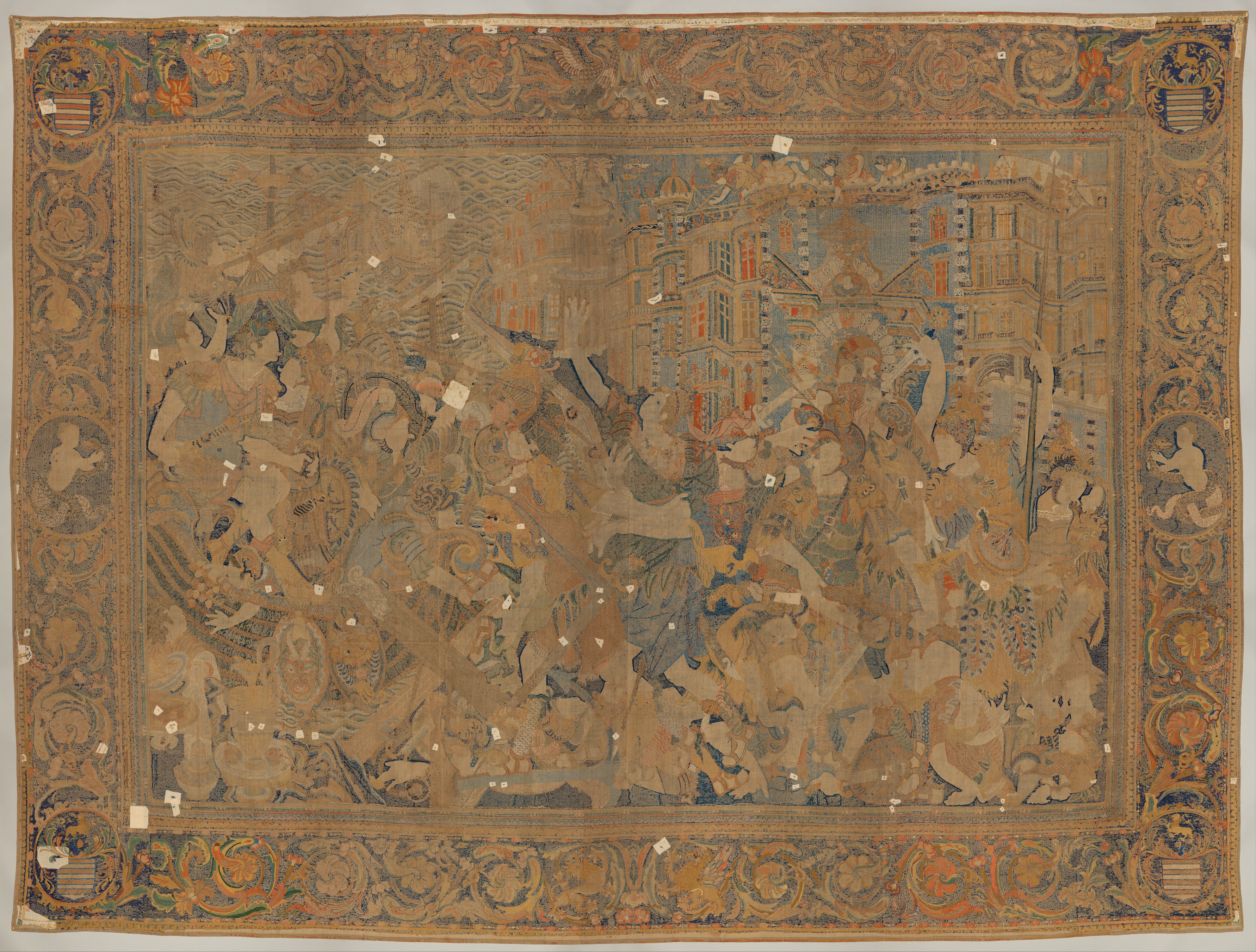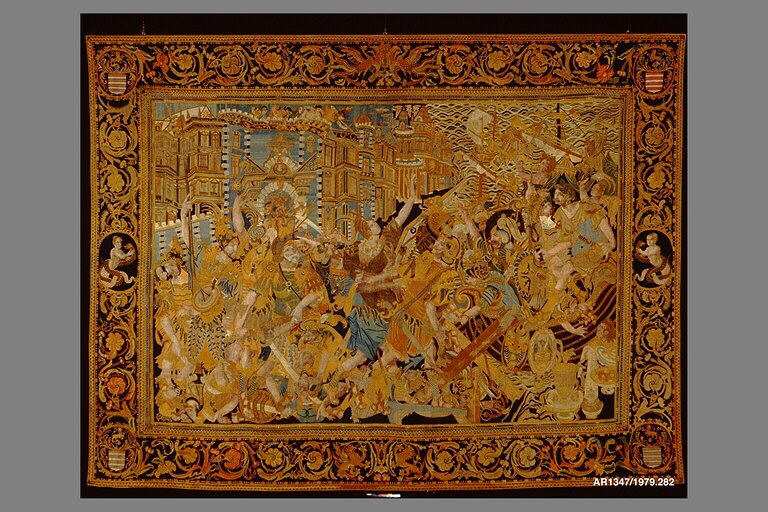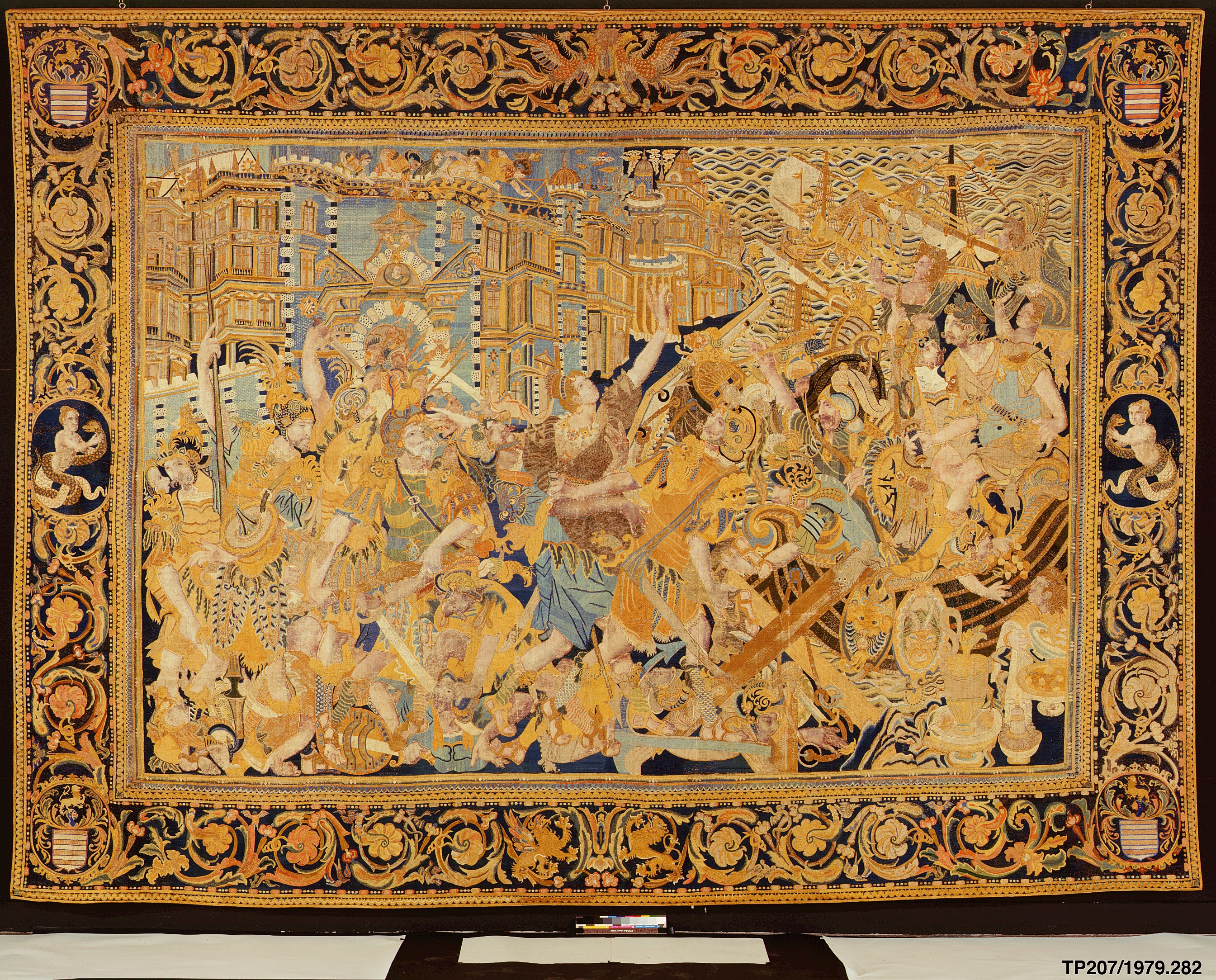The Abduction of Helen from a set of The Story of Troy
Chinese, Macao, for export market
Not on view
Embroidered in China, this depiction of the abduction of Helen is monumental both in scale and in the freedom granted to the embroiderers, who included many Chinese motifs and interpretations within a purely Western narrative. A quintessential account in the Western classical tradition, the story of the Trojan War inspired large sets of European tapestries; the earliest documented set was presented to Charles the Bold in 1472.[1] This embroidered hanging, too, was part of a large set, of which the Metropolitan Museum owns three, and four are preserved in other collections.[2]
All have the same border, including an armorial at each corner that does not correspond completely with any known arms. Perhaps it is an erroneous rendering of the arms of the Mascarenhas family of Portugal; the nobleman Francisco Mascarenhas served as governor of Macau from 1623 to 1626.
The abduction of Helen ignited war between Troy and Greece; this version, in which Helen is forcibly seized, relies on postclassical sources.[3] Against a backdrop of European-style buildings with Baroque facades and struggling armored figures, a protesting Helen is carried off by two men, away from her white-bearded husband, Menelaus, and toward a boat on the right where the Trojan prince Paris awaits. No single print source has yet been found, but the subject matter and composition of the hanging were surely based on European sources.[4]
The Chinese embroiderers were responsible for many details from the Chinese decorative vocabulary, such as the waves in the background, the phoenixes in the center of the upper border, various details of the armor, the scales of the serpents and tritons in the border, and the lychee fruit seen outlined against the side of the boat.
While most of the hanging is embroidered, the figures’ faces and exposed limbs were painted directly on the cotton foundation cloth, probably also in China. Especially in the faces, the modeling of light and shadow for a three-dimensional effect, while naively done, shows an aspect of European-style painting that had reached East Asia with Jesuit missionaries in the sixteenth century. The Italian Jesuit Giovanni Niccolo (or Nicolao, 1563–1626) established an academy of painting in Japan in 1583 to train local artists to produce religious art. When the missionaries’ relations with Japanese authorities deteriorated, Niccolo fled Japan, returning to Macau in 1614. Some of his students became active in China, including You Wenhui (baptized Manoel Pereira, 1575–1633), a young Chinese from Macau, and Ni Yicheng (also known as Jacopo Niva, 1579–1635), of Japanese and Chinese parentage. You Wenhui produced the only surviving painted portrait of the Jesuit leader Matteo Ricci (1552–1610).[5] The more highly regarded Ni Yicheng had studied at Niccolo’s academy in Japan, and in China he "was in constant demand to paint works . . . both for the mission in China and the Jesuits’ church in Macau."[6] Perhaps these artists or less well-documented colleagues were responsible for painting this textile.
Scientific analysis of the hanging’s pigments supports this intercultural possibility: results show a blue-green pigment not used in Asia and a white not used in Europe. Furthermore, the white pigment occurs more frequently in Japanese than in Chinese contexts.[7]
[Joyce Denney, adapted from Interwoven Globe, The Worldwide Textile Trade, 1500-1800/ edited by Amelia Peck; New York: Metropolitan Museum of Art; New Haven: distributed by Yale University Press, 2013]
Footnotes
1. Campbell et al., Tapestry in the Renaissance: Art and Magnificence, p. 19.
2. The two others at the Metropolitan Museum are acc. nos. 50.97.2 and 51.152. Of the hangings in other collections, two are in the Musee des Beaux-Arts, Lyon (see Briend, Les objets d’art, pp. 76–77), and one is with Steinitz, Paris (see Courtin and Langeois, Steinitz, pp. 34–36). For additional details, see Standen, European Post-Medieval Tapestries, vol. 2, pp. 796–802.
3. Ibid., pp. 799, 802 n. 9.
4. Similarity to works of Marcantonio Raimondi was noted in Mailey, "European Sculpture and Decorative Arts: The Abduction of Helen." See also Standen, European Post-Medieval Tapestries, vol. 2, p. 799.
5. The painting is preserved in the collection of the Church of the Gesu, Rome. See Levenson et al., Encompassing the Globe, pp. 288–89.
6. Bailey, Art on the Jesuit Missions in Asia and Latin America, p. 96. 7. Report by Marco Leona, David H. Koch Scientist in Charge of the Department of Scientific Research at the Metropolitan Museum, August 23, 2012.
Due to rights restrictions, this image cannot be enlarged, viewed at full screen, or downloaded.
This artwork is meant to be viewed from right to left. Scroll left to view more.
